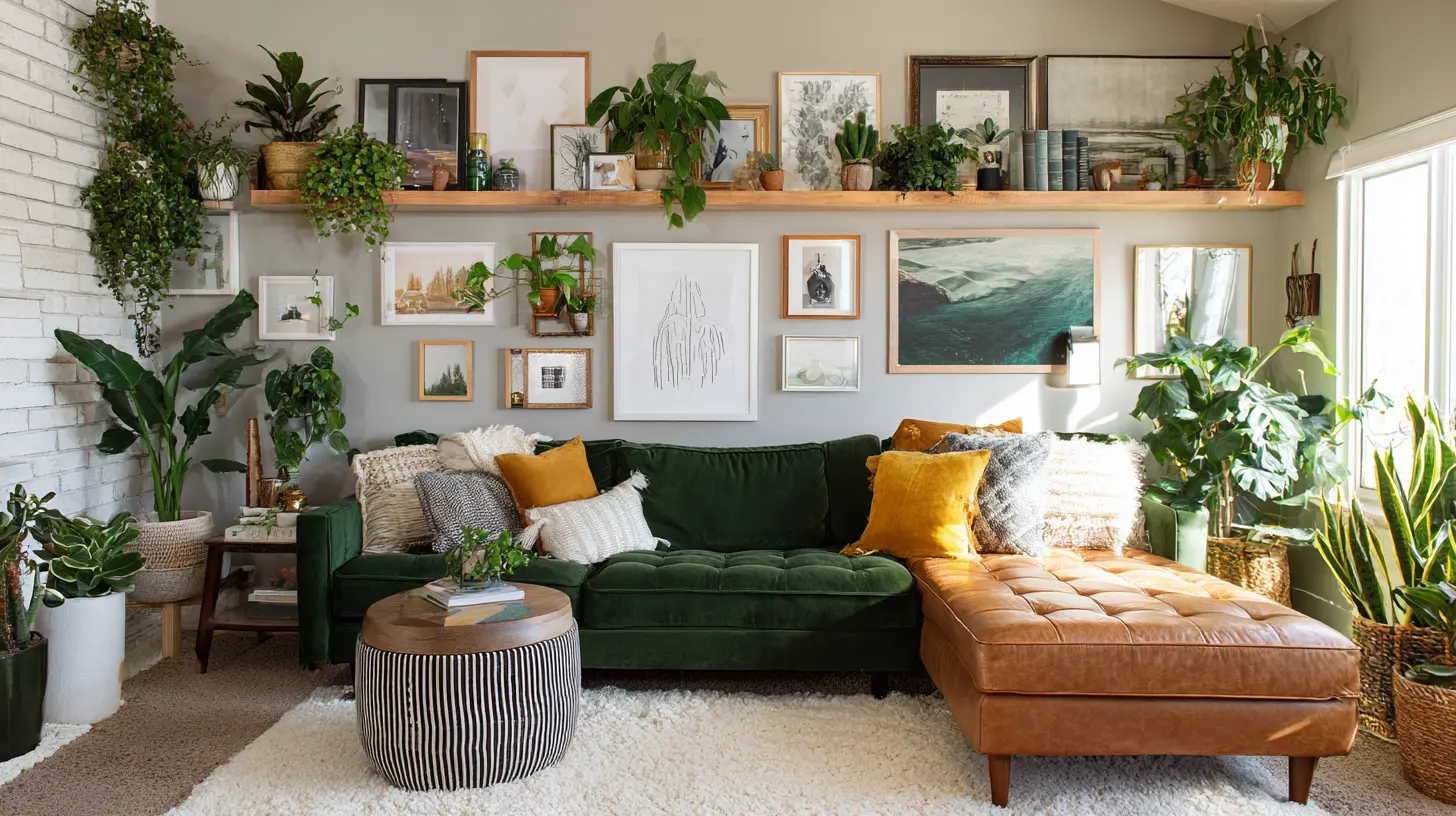20 Living Room Plant Ideas: Create a Breathtaking Indoor Oasis
There’s a quiet magic that unfolds when you invite nature into your living room. Plants are so much more than simple decor; they are dynamic, living sculptures that breathe life into our most-used spaces. I still remember the immense, feathery Boston Fern in my grandmother’s living room; it wasn’t just a plant, it was a calming presence that made the whole room feel more welcoming. That feeling—of creating a serene, vibrant sanctuary—is what styling with plants is all about.
Whether you have a sun-drenched loft or a cozy, low-light den, there is a perfect plant waiting to transform it. Greenery can soften architectural lines, introduce beautiful organic textures, and serve as a stunning focal point. From the dramatic silhouette of a single statement tree to the collected charm of a shelf overflowing with trailing vines, the possibilities are as diverse as the plant kingdom itself.
This guide is dedicated to that transformation, providing you with 20 living room plant ideas designed to help you create a breathtaking indoor oasis. Let’s cultivate some inspiration and discover how to make your living room bloom with life and style.
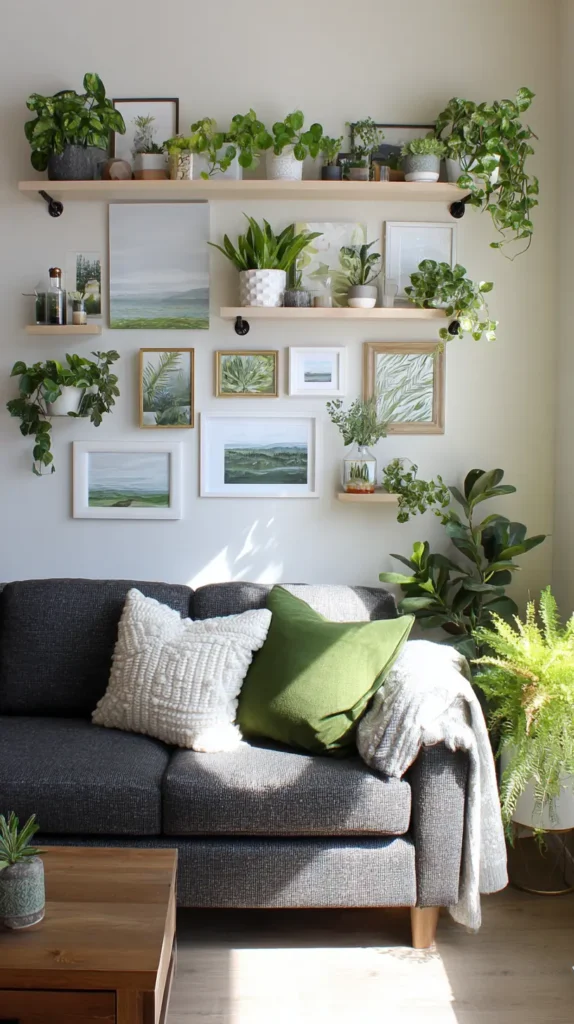
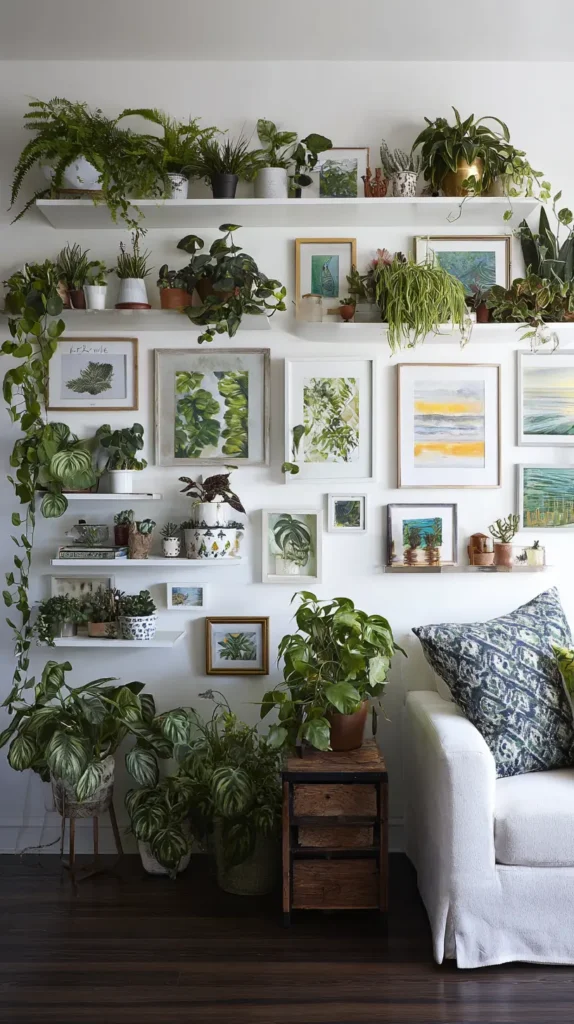
1. The Art of the Plant Cluster: A Lush, Layered Oasis
Contents
- 0.1 1. The Art of the Plant Cluster: A Lush, Layered Oasis
- 0.2 2. The Solitary Statement: A Majestic Fiddle Leaf Fig
- 0.3 3. Tropical Drama: The Iconic Monstera Corner
- 0.4 4. Cascading Elegance: Trailing Plants on Shelves and Ledges
- 0.5 5. Architectural Form: The Stately Snake Plant
- 0.6 6. Sun-Drenched Windowsill: A Dazzling Succulent Collection
- 0.7 7. Vertical Greenery: Crafting a Living Wall
- 0.8 8. Whimsical Charm: A Delicate String of Pearls Display
- 0.9 9. Desert Modern: A Sculptural Cactus Arrangement
- 0.10 10. Zen Simplicity: The Understated ZZ Plant
- 0.11 11. A Pop of Color: The Brilliant Flowering Anthurium
- 0.12 12. Fresh and Airy: A Lush Boston Fern Haven
- 0.13 13. Functional Beauty: Air-Purifying Peace Lilies
- 0.14 14. Elevated Style: Using Pedestals and Plant Stands
- 0.15 15. The Hanging Garden: Bohemian Macrame Hangers
- 0.16 16. Miniature Worlds: The Enchanting Terrarium
- 0.17 17. Mediterranean Grace: The Sophisticated Indoor Olive Tree
- 0.18 18. Wild and Free: A Towering Bird of Paradise
- 0.19 19. Ethereal Beauty: The Delicate Maidenhair Fern
- 0.20 20. Simple and Seasonal: Dramatic Branches in a Vase
- 1 Conclusion
- 2 FAQs
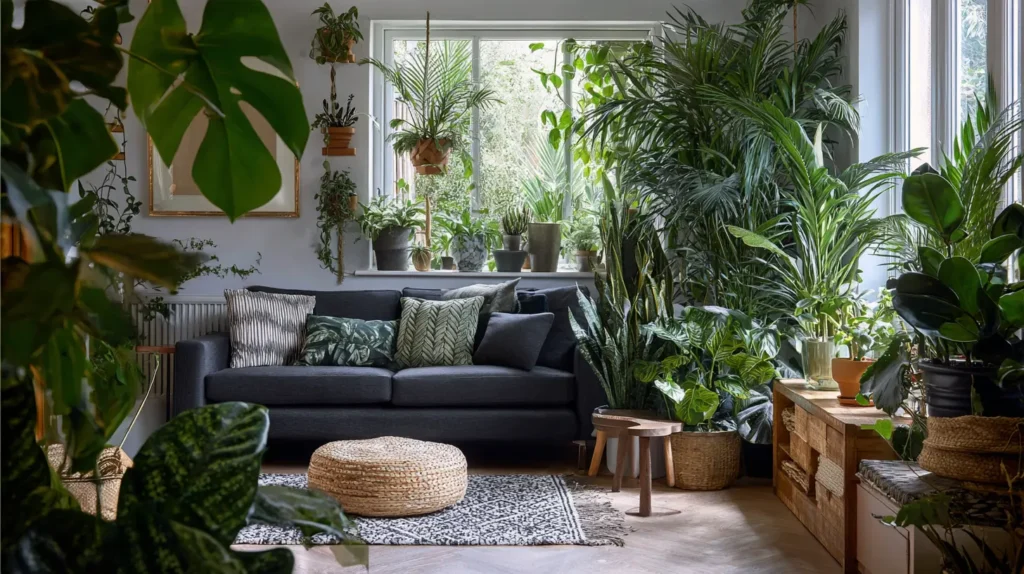
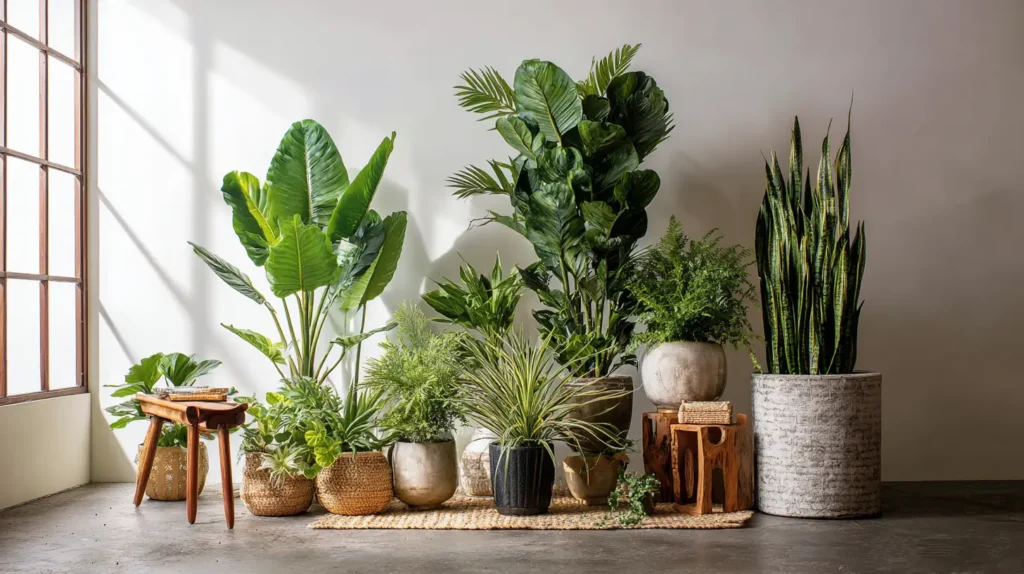
Instead of scattering individual plants, create an immersive and breathtaking focal point by mastering the art of the plant cluster. This is about curating a miniature indoor jungle, a living tapestry of textures, heights, and forms that feels intentional and deeply connected to nature. Imagine an empty corner by a window transformed into a lush sanctuary: a tall, architectural Fiddle Leaf Fig provides the vertical anchor while the broad, perforated leaves of a Monstera add a tropical layer. At their feet, the upright, variegated swords of a Snake Plant add structure, and from a low stool, the delicate vines of a Pothos spill gracefully onto the floor.
This technique is the heart of biophilic design, creating a space that feels abundant and alive. The key is to play with contrast and harmony. Mix large, glossy leaves with feathery fronds; combine deep emerald greens with lime and silver variegation. The planters themselves become part of the art. A rustic terracotta pot next to a woven seagrass basket and a sleek ceramic cylinder tells a story of collected, effortless style. A well-designed cluster doesn’t just fill a space; it creates a destination within your room, a green haven that invites you to pause and breathe.
- Start with a tall “thriller” plant to anchor your cluster and provide height.
- Add medium-sized “filler” plants with different leaf shapes to create density and interest.
- Incorporate a “spiller” or trailing plant on a low stand to soften the edges.
- Vary your planter materials—terracotta, ceramic, woven baskets—but keep them in a complementary color palette.
- Ensure all plants in the cluster share similar light requirements for easy placement and care.
Pro Design Tip: Place a small, upward-facing spotlight behind your plant cluster. At night, it will cast dramatic, dancing shadows on the wall, turning your arrangement into a living art installation.
Budget Consideration: Build your cluster over time. Start with one or two key plants and fill in with smaller, more affordable options from local nurseries. Propagating your own Pothos or Spider Plants is a free way to add lush fillers.
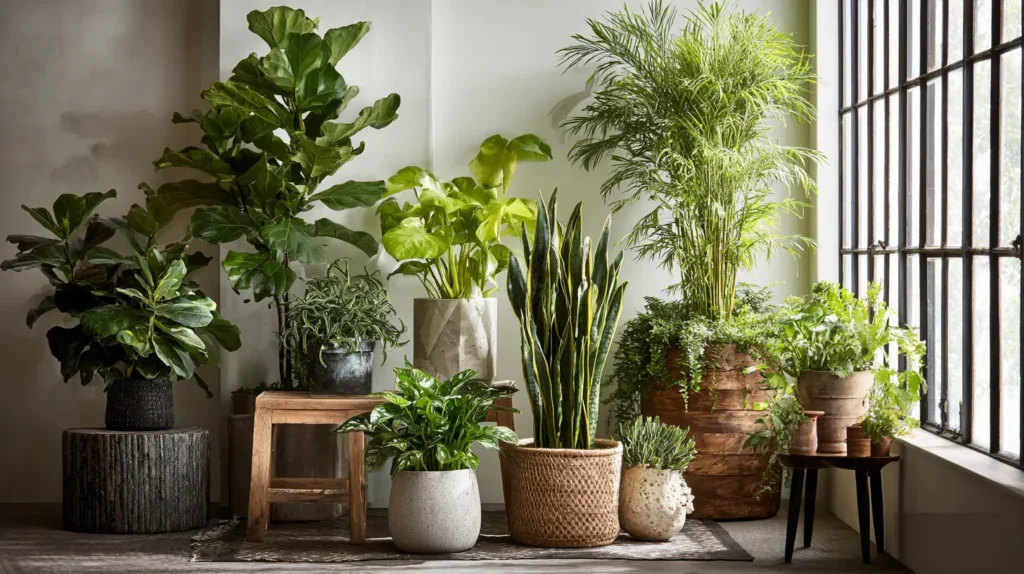
2. The Solitary Statement: A Majestic Fiddle Leaf Fig
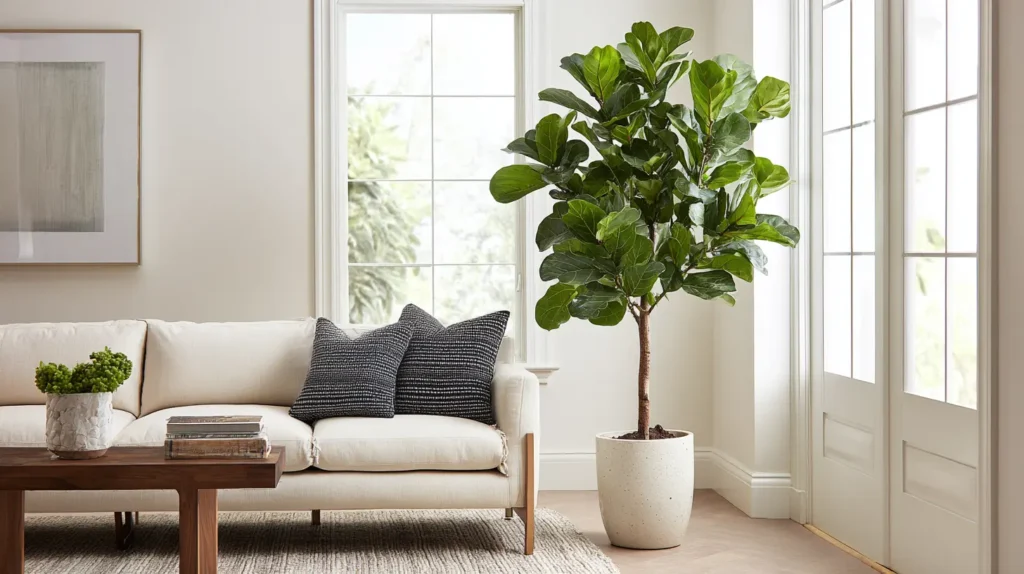
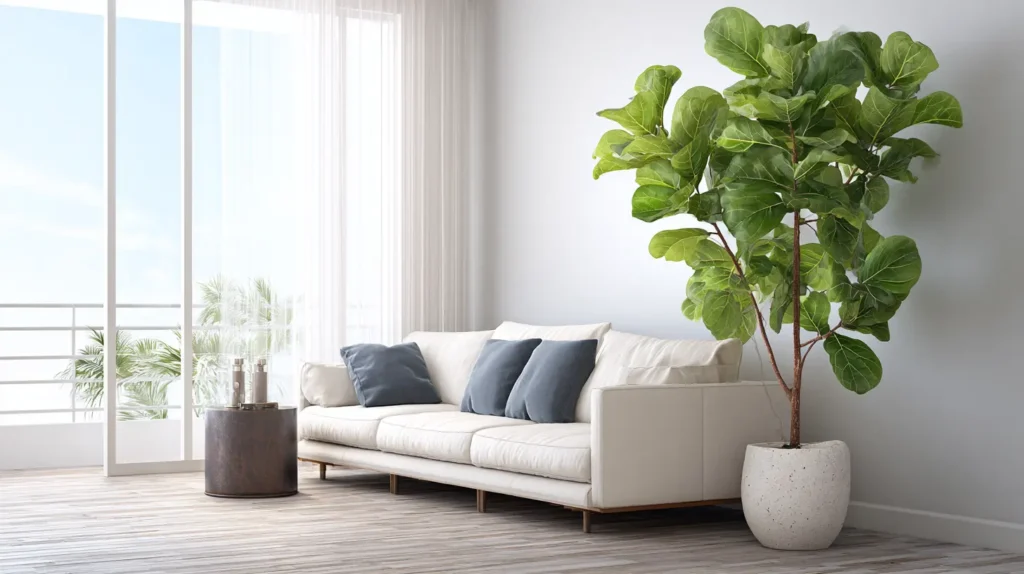
Sometimes, a single, magnificent plant is all you need to define an entire room. The Fiddle Leaf Fig, with its enormous, violin-shaped leaves and statuesque presence, is the epitome of a living sculpture. Placing a tall, healthy specimen in your living room is a declaration of style—it communicates sophistication, an appreciation for natural form, and a touch of modern drama. Its impressive verticality draws the eye upward, making ceilings feel higher and the room more grand.
The beauty of a statement Fiddle Leaf Fig lies in its elegant simplicity. It doesn’t need much company to shine. Positioned in a minimalist ceramic pot beside a sleek sofa, framing a large window, or standing sentinel in an entryway, it commands attention. The deep green, heavily veined leaves provide a powerful organic contrast to the clean lines of modern furniture, creating a perfect balance between the natural and the man-made. This isn’t just a plant; it’s a piece of feature furniture.
- Choose a planter that complements the plant’s scale without overwhelming it—a simple, high-quality pot is best.
- Find a permanent home for it in a spot with very bright, consistent, indirect light to prevent leaf drop.
- Clean the large leaves with a soft, damp cloth every few weeks to keep them glossy and healthy.
- Water thoroughly only when the top few inches of soil are dry, and ensure excellent drainage.
- Be prepared to rotate it a quarter turn each week so all sides get equal light exposure.
Pro Design Tip: For a professionally styled look, prune the lower leaves of a mature Fiddle Leaf Fig to expose more of its trunk, creating a more tree-like, “standard” form that feels even more architectural.
Budget Consideration: While large Fiddle Leaf Figs can be an investment, smaller ones are much more affordable. With patience and proper care, a smaller plant will grow into a stunning statement piece within a few years.
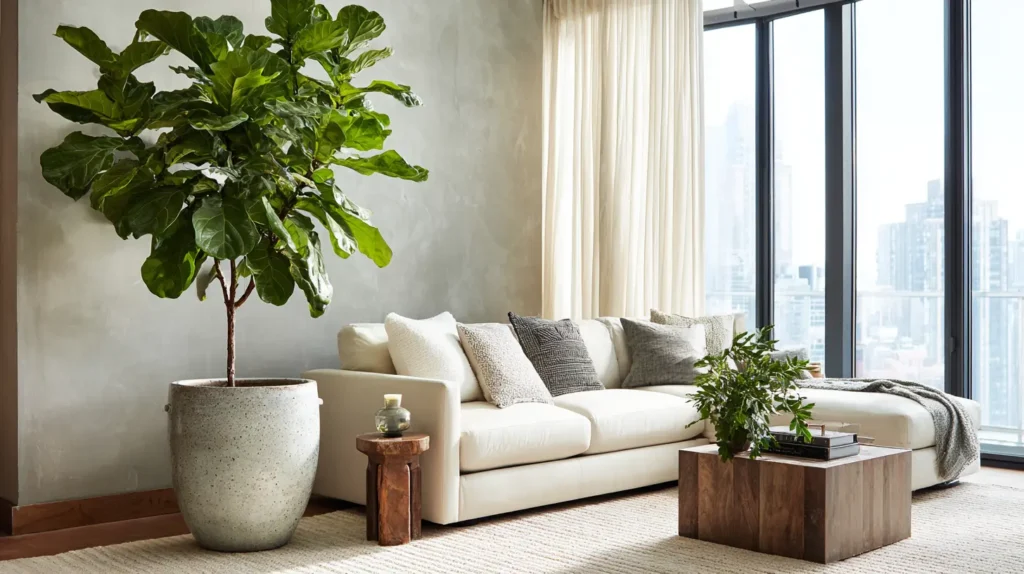
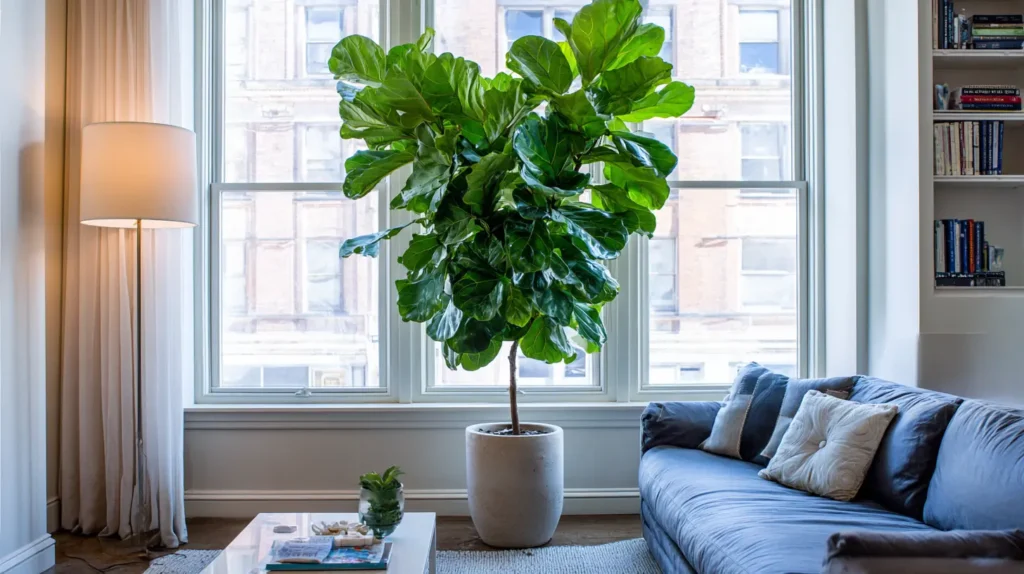
3. Tropical Drama: The Iconic Monstera Corner
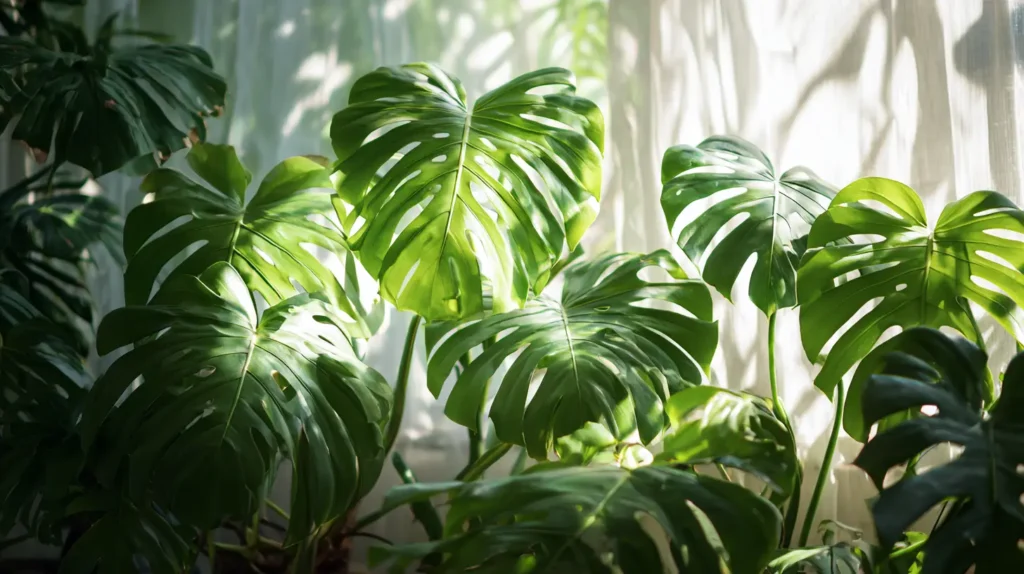
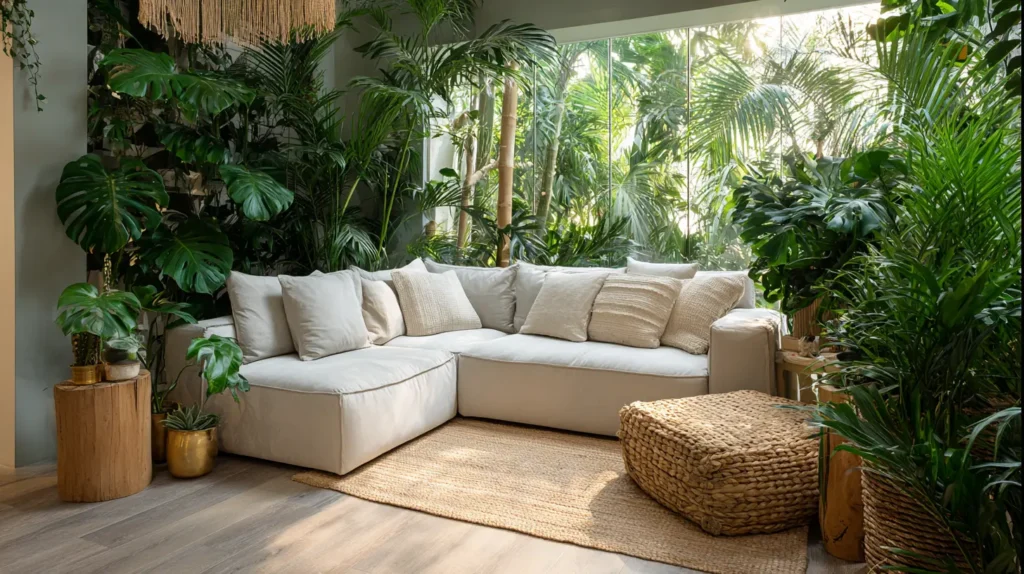
Unleash the wild, untamed beauty of the tropics by dedicating a corner of your living room to the iconic Monstera Deliciosa. Famous for its magnificent, naturally perforated leaves known as fenestrations, the Monstera brings an instant sense of lush, exotic escape. Its sprawling growth habit feels generous and full of life, turning any space into a vibrant, jungle-inspired retreat. The shadows cast by its unique leaves create a beautiful, dappled light effect that shifts throughout the day.
A Monstera isn’t just a plant; it’s an experience. It encourages a more relaxed, bohemian aesthetic, pairing beautifully with natural textures like rattan, linen, and warm woods. As it matures, it will want to climb, so providing a moss pole not only supports its growth but also adds another layer of natural texture. Placing a Monstera where it has room to spread its leaves allows it to fully express its dramatic character, making your living room feel like a permanent vacation getaway.
- Give your Monstera plenty of space to grow outwards as well as upwards.
- Position it in bright, indirect light to encourage the development of its signature leaf splits.
- Provide a moss pole or trellis early on to guide its growth and support its aerial roots.
- Its large leaves can accumulate dust; wipe them down regularly to keep them healthy and vibrant.
- This plant appreciates humidity, so consider placing it near a humidifier or misting it occasionally.
Pro Design Tip: Place your Monstera against a plain, light-colored wall. This will make its dramatic, sculptural leaves the undeniable focal point and highlight every beautiful split and hole.
Budget Consideration: Monstera plants are incredibly popular and easy to find. Start with a smaller, more affordable plant; these vigorous growers will reward you with impressive size in a surprisingly short amount of time.
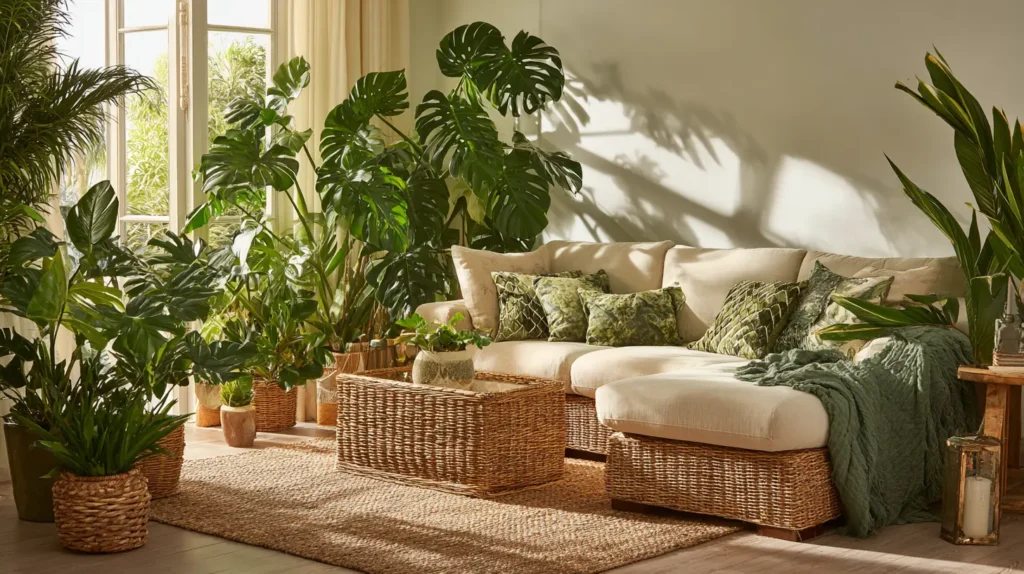
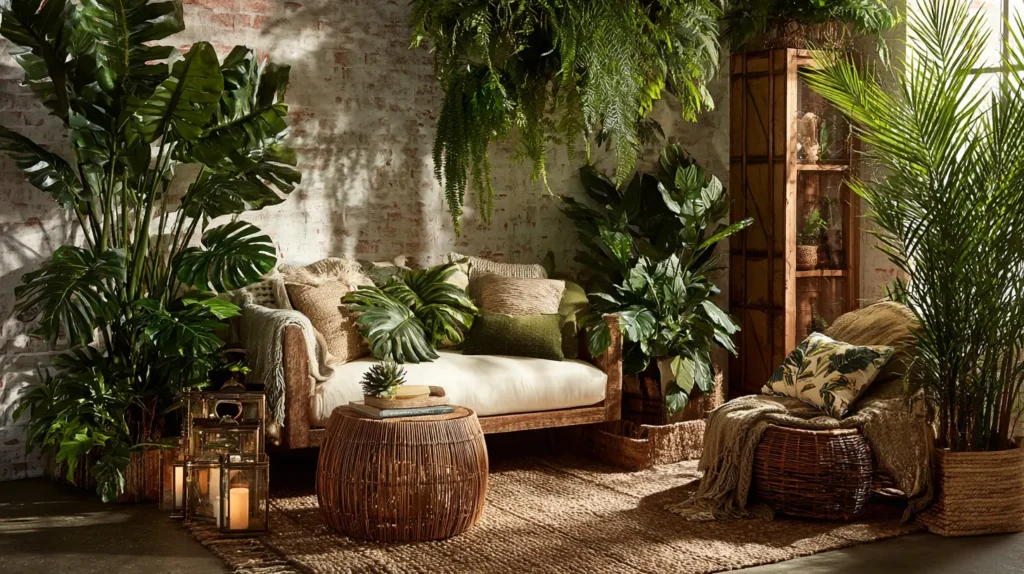
4. Cascading Elegance: Trailing Plants on Shelves and Ledges
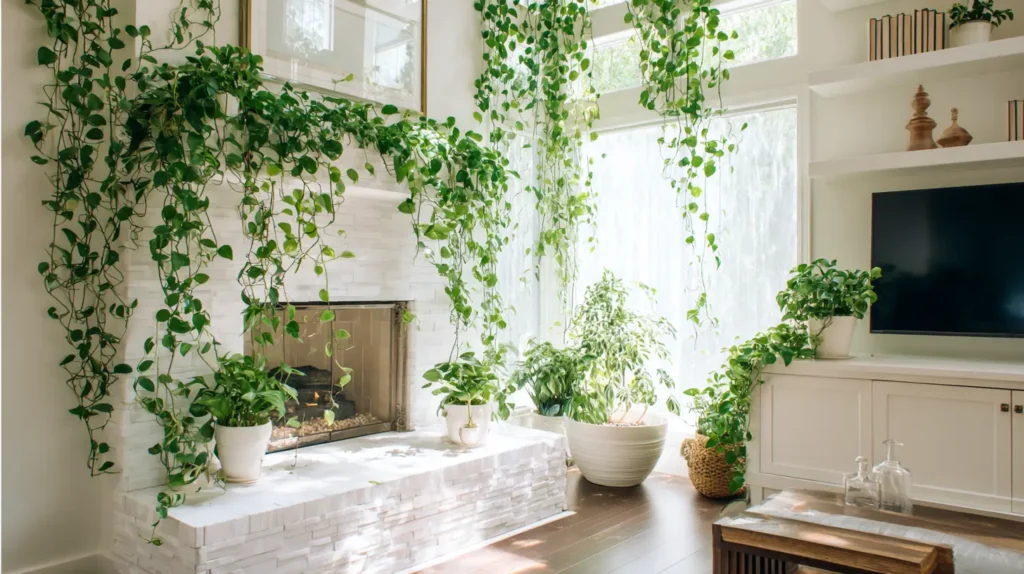
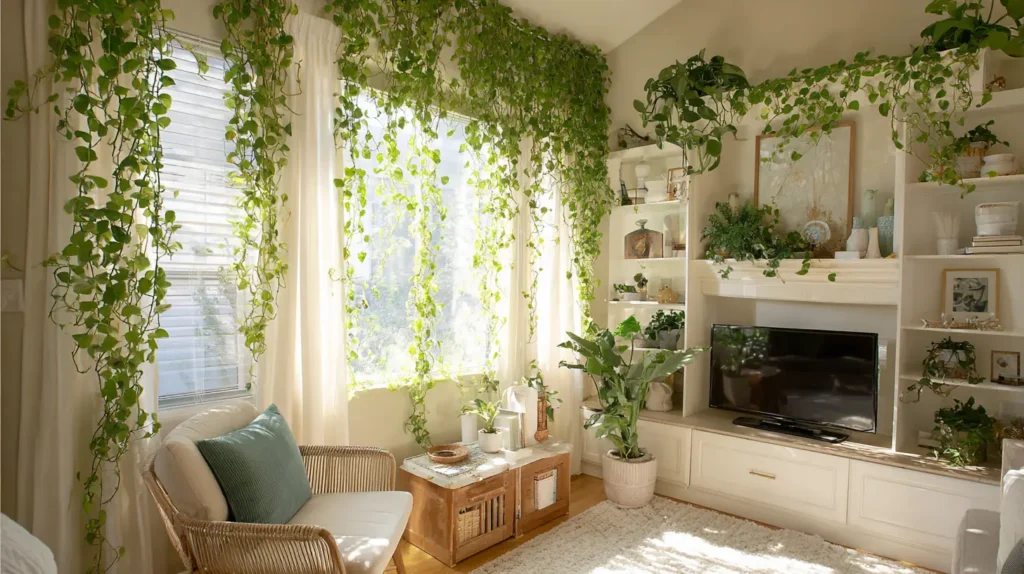
Introduce a sense of soft, flowing movement into your living room with the cascading beauty of trailing plants. Varieties like Golden Pothos, English Ivy, and Heartleaf Philodendron are perfect for adding a touch of living grace to high places. When perched atop a tall bookshelf, a fireplace mantel, or a floating shelf, their vines will spill downwards like a green waterfall, softening hard architectural lines and adding a dynamic, romantic quality to your decor.
This is a brilliant way to utilize vertical space, drawing the eye upwards and making the room feel more lush and immersive without taking up any floor space. A well-placed trailing plant can beautifully frame a piece of art, drape elegantly down the side of a media console, or turn a simple bookshelf into an enchanting display. The gentle sway of their vines brings a subtle, calming energy to the room, making it feel more organic and alive.
- Choose a location where the vines have ample room to trail without being disturbed.
- A high shelf or the top of a cabinet is an ideal spot to showcase their cascading habit.
- Regularly prune the vines to encourage a fuller, bushier plant and control their length.
- Rotate the pot occasionally to ensure all parts of the plant receive adequate light.
- Don’t be afraid to let the vines grow long; their length is what creates the dramatic effect.
Pro Design Tip: For a stunning, cohesive look, use the same type of trailing plant in several spots at different heights throughout the room. This repetition creates a beautiful visual rhythm and ties the space together.
Budget Consideration: Pothos and Philodendrons are famously inexpensive and ridiculously easy to propagate. A single plant can be used to create dozens of new ones for free, allowing you to fill your space with lush, trailing greenery.
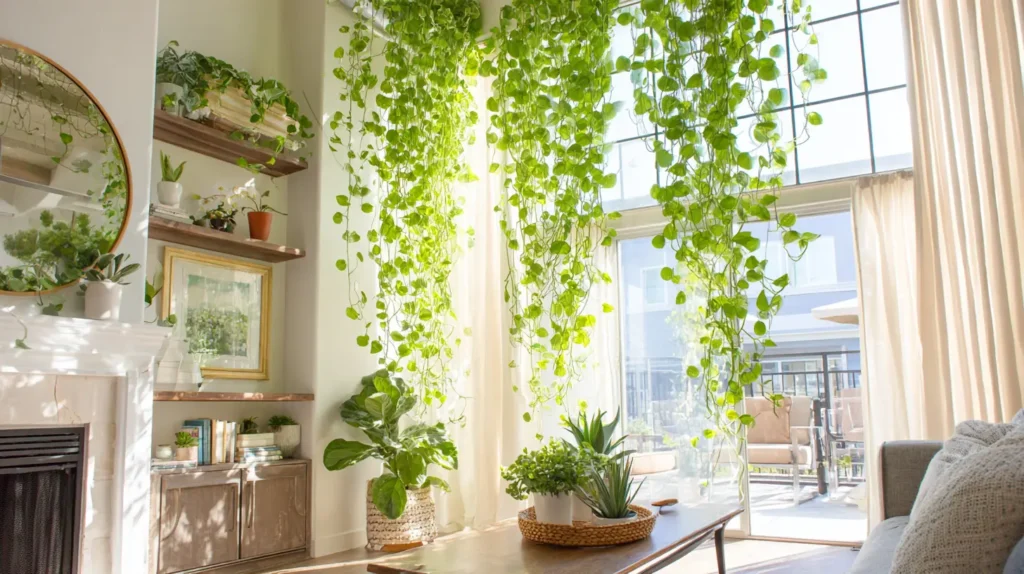
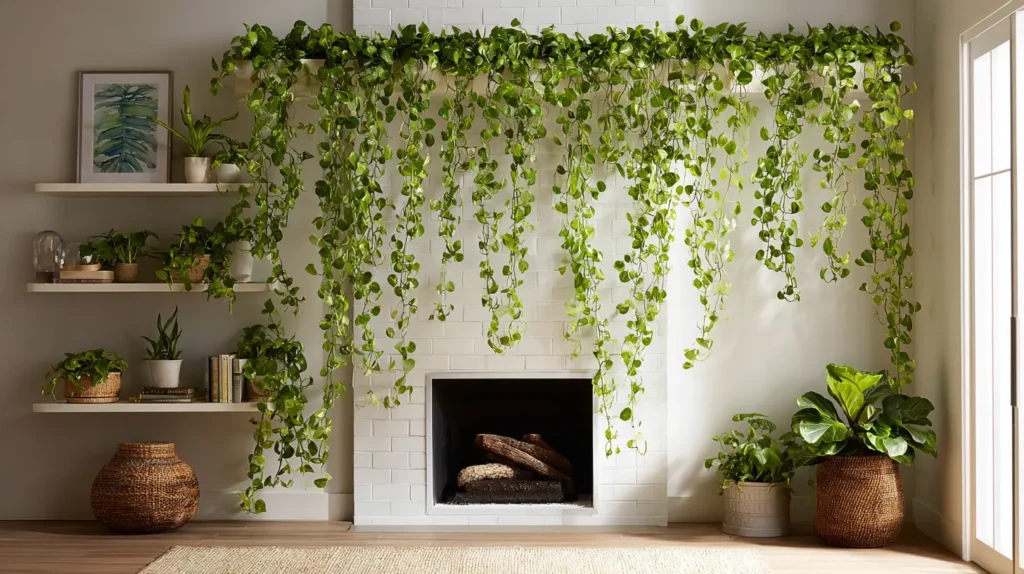
5. Architectural Form: The Stately Snake Plant
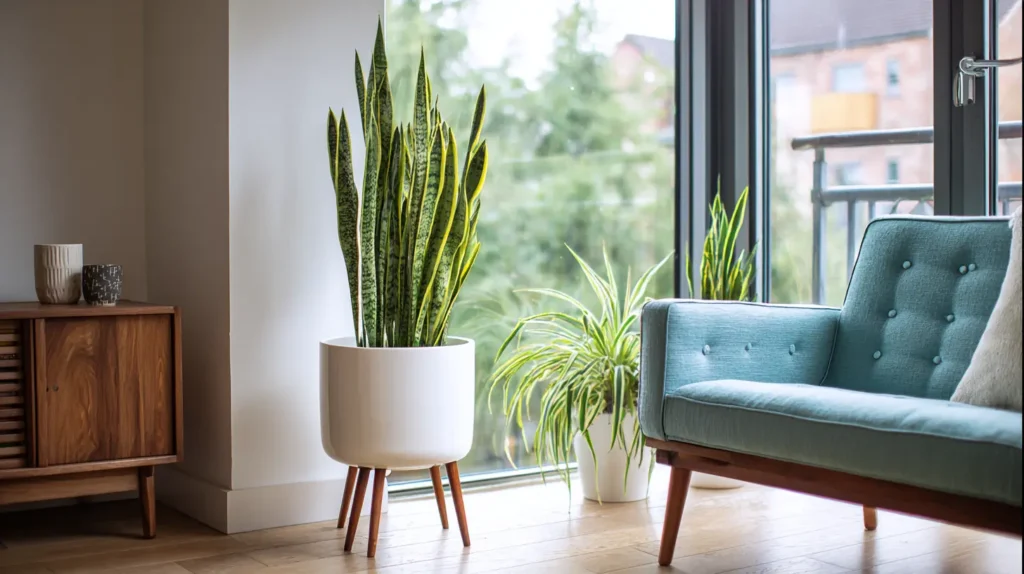
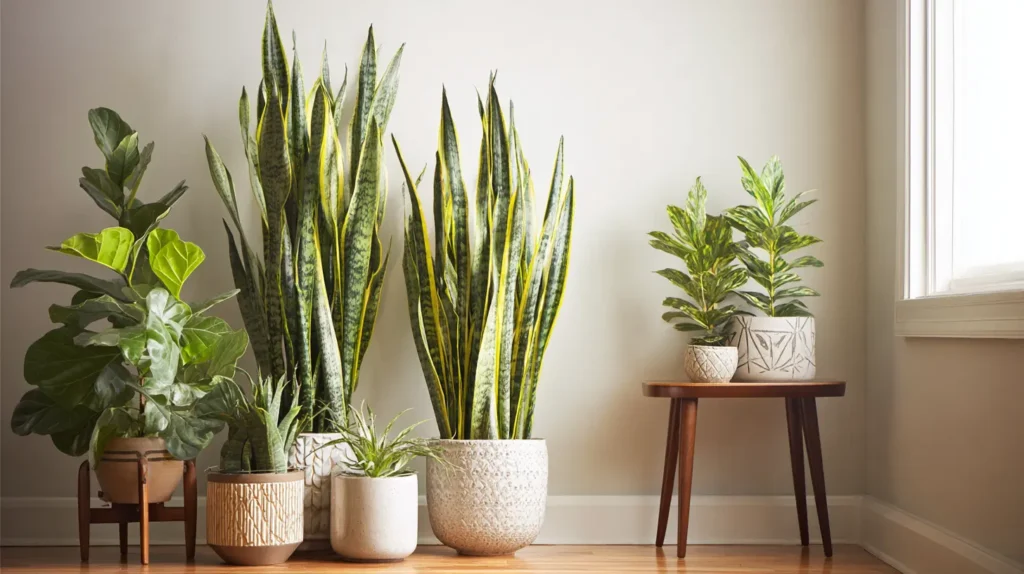
For an injection of pure, modern style with an almost indestructible character, the Snake Plant (Sansevieria) is an absolute essential. Its form is the star of the show: stiff, sword-like leaves thrust boldly upwards, creating a powerful vertical element that feels both sculptural and impeccably clean. The variegated patterns of deep green, silvery-grey, and creamy yellow add a layer of visual texture, resembling natural, abstract art. It’s a plant that doesn’t ask for attention, but effortlessly commands it through its sheer structural integrity.
What makes the Snake Plant so brilliant for interior design is its versatility and resilience. It can thrive in the bright light of a window or the dim corner of a study, making it a designer’s secret weapon for adding life to challenging spaces. Placed in a minimalist pot on a clean-lined stand, it enhances a mid-century modern aesthetic. Grouped together, these plants can form a living screen, creating a subtle but effective division in an open-plan room. They bring a sharp, sophisticated edge that balances softer furnishings beautifully.
- To accentuate its height, choose a planter that is at least one-third as tall as the plant itself.
- Embrace its low-maintenance nature; this plant truly thrives on neglect, so allow the soil to dry out completely before watering.
- Wipe down the leaves with a damp cloth a few times a year to remove dust and keep them looking sharp.
- Given its upright growth, it’s perfect for tight spaces where a wider plant wouldn’t fit, like next to a media console or in a narrow hallway.
- Explore different varieties, like the cylindrical ‘Sansevieria cylindrica’, for even more unique sculptural forms.
Pro Design Tip: Create a high-contrast, dramatic vignette by placing a dark green Snake Plant in a stark white ceramic pot against a light-colored wall. The sharp silhouette will pop, creating a bold, graphic statement.
Budget Consideration: A single Snake Plant can be easily propagated by dividing the root ball or even from leaf cuttings, meaning one purchase can lead to a house full of these architectural beauties over time.
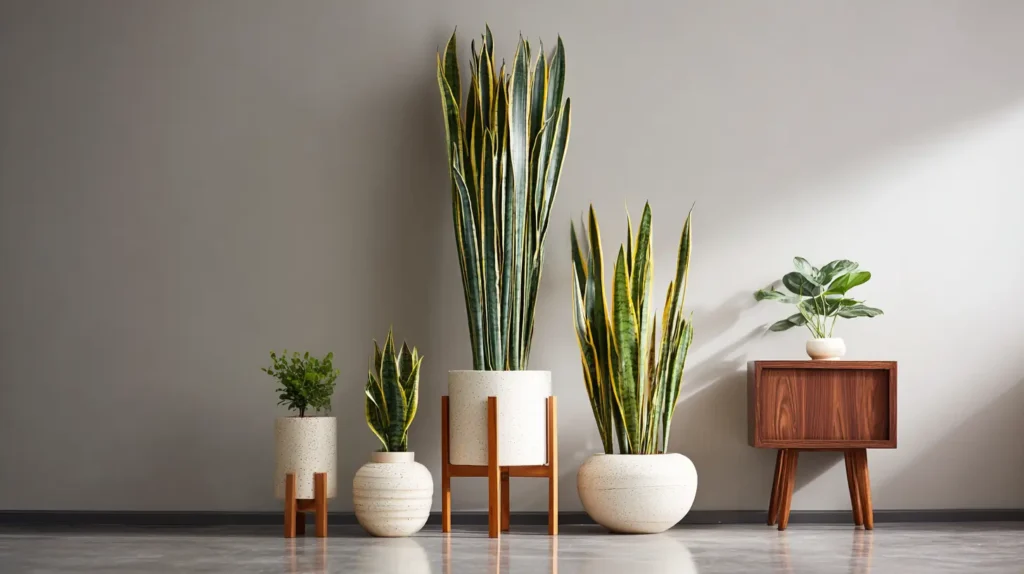
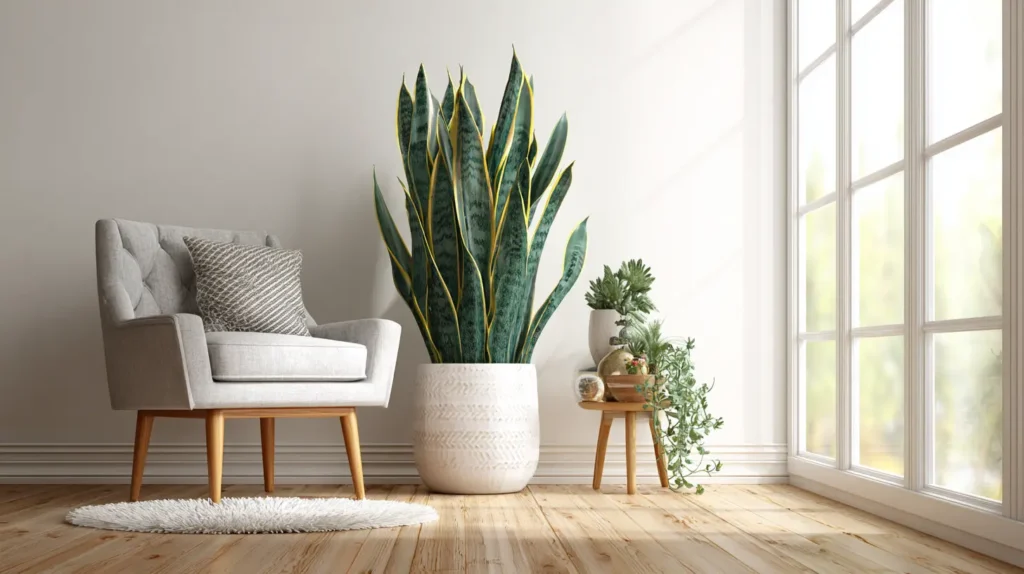
6. Sun-Drenched Windowsill: A Dazzling Succulent Collection
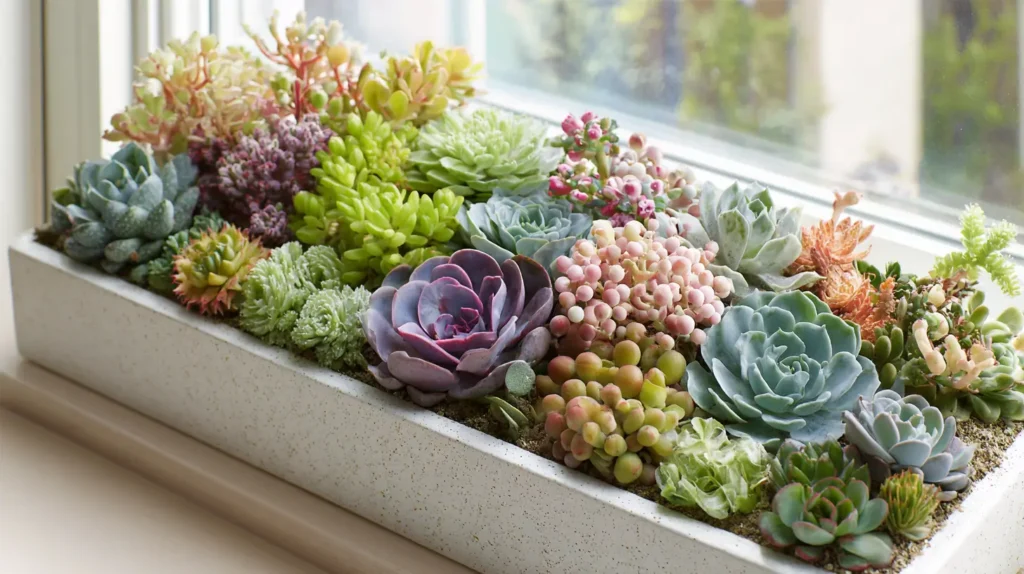
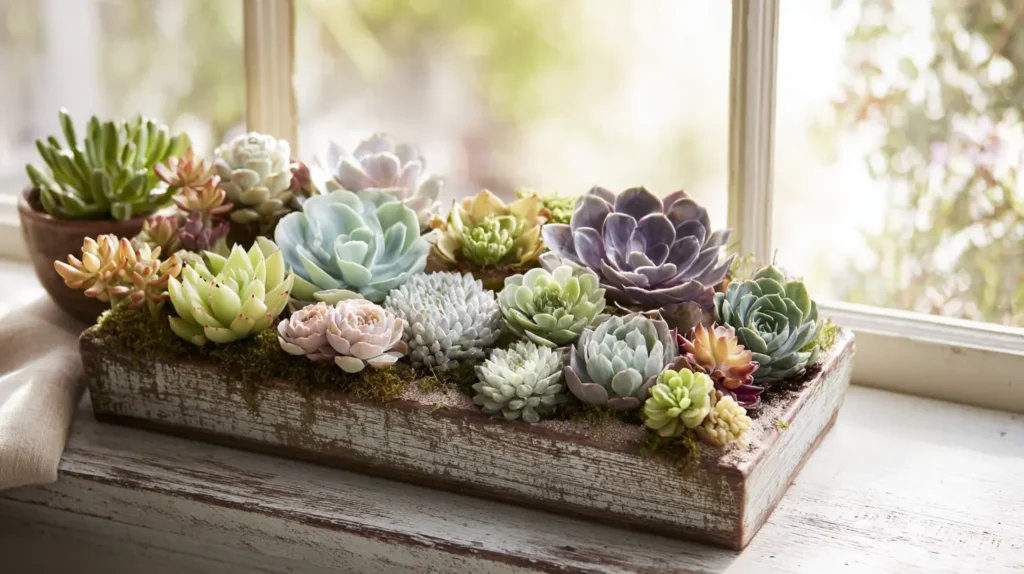
Transform a sun-drenched windowsill from a forgotten ledge into a captivating miniature desertscape with a curated collection of succulents. These small wonders are nature’s jewels, offering an incredible diversity of forms, from the tightly spiraled rosettes of an Echeveria to the spiky geometry of a Haworthia. Their fleshy leaves come in a surprising array of colors—misty greens, deep purples, dusty blues, and even rosy pinks—creating a living mosaic that catches the light beautifully.
Styling with succulents is an exercise in composition. Grouping them together allows their unique shapes and colors to play off one another. A long, narrow tray filled with various small succulents becomes a dynamic centerpiece that is low-maintenance and endlessly fascinating. It’s a perfect solution for adding a touch of life and modern charm without overwhelming a space, bringing a cheerful, sun-loving vibe to the brightest part of your home.
- Ensure your chosen windowsill receives at least six hours of direct sunlight per day.
- Use a gritty, fast-draining cactus and succulent soil mix to prevent any chance of root rot.
- Plant them in small pots with drainage holes; terracotta is an excellent choice as it allows the soil to dry out faster.
- Water only when the soil is bone dry. It’s far better to underwater than to overwater these plants.
- Rotate the pots every few weeks to encourage even growth and prevent them from stretching towards the light.
Pro Design Tip: For a sleek and cohesive look, plant your entire diverse collection in identical small pots (e.g., all white ceramic or all terracotta). This uniformity in the planters will make the unique shapes and colors of the succulents stand out even more.
Budget Consideration: Succulents are incredibly affordable and one of the easiest plants to propagate. A single leaf from many varieties can sprout roots and grow into a whole new plant, making it easy to expand your collection for free.
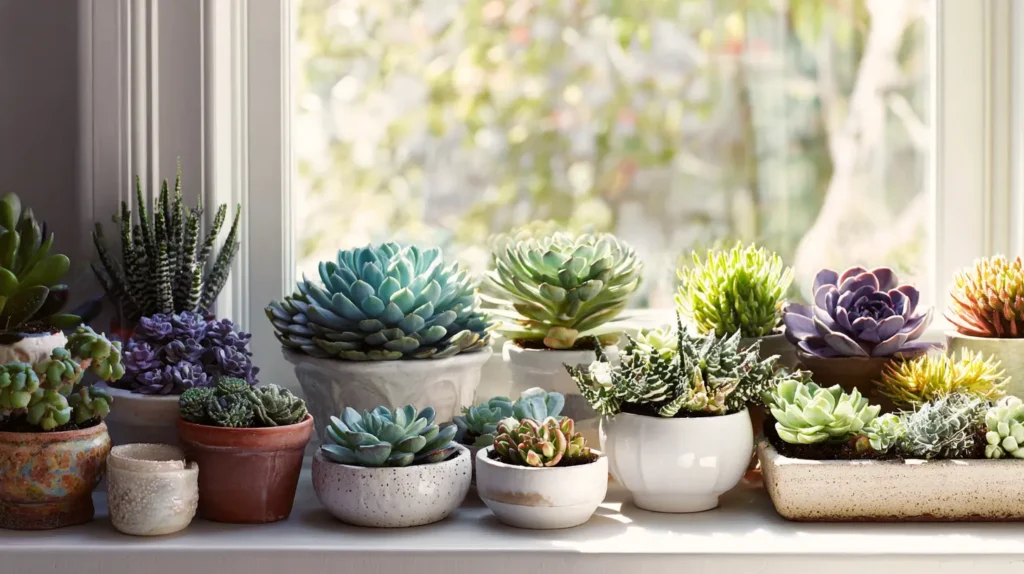
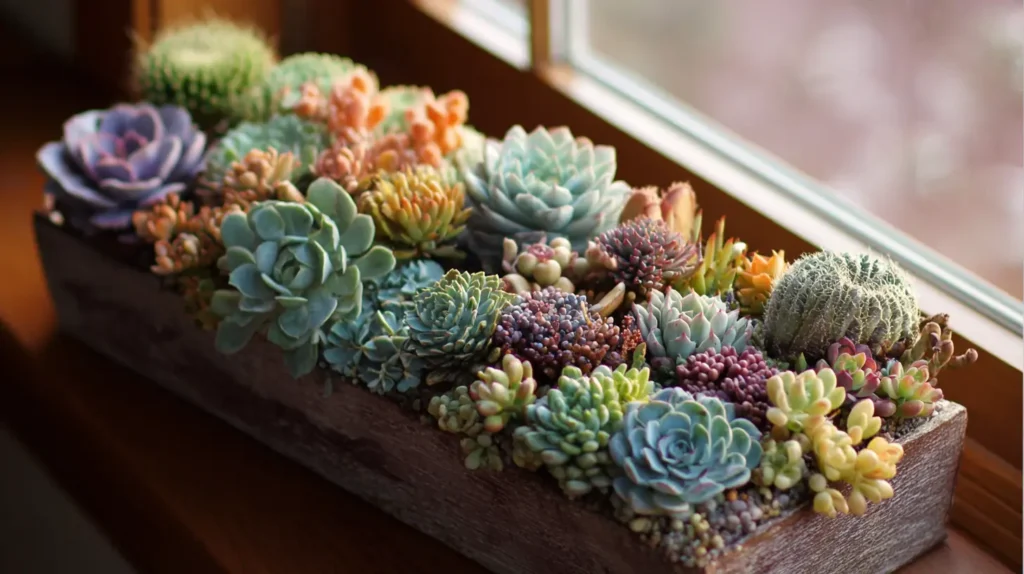
7. Vertical Greenery: Crafting a Living Wall
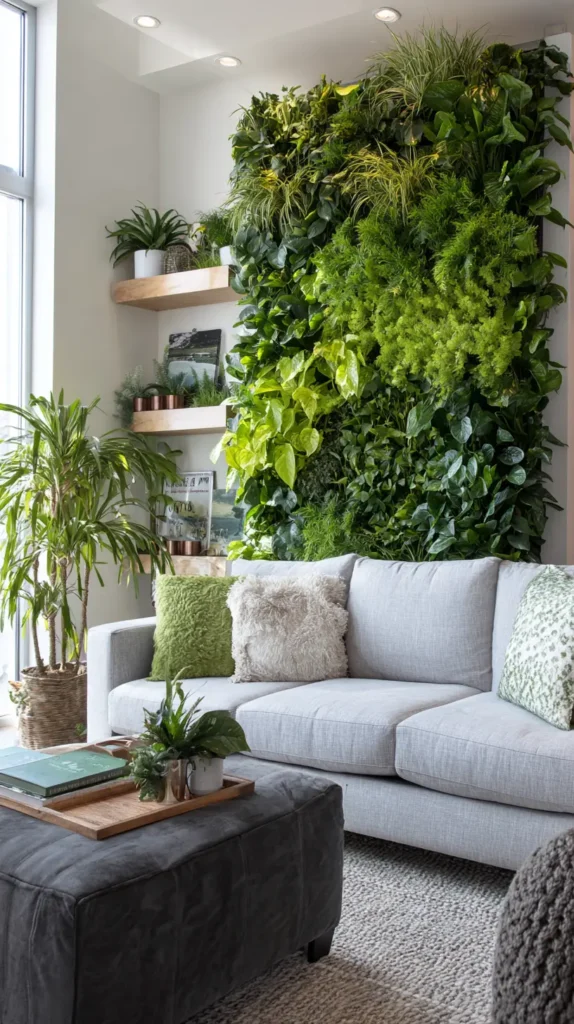
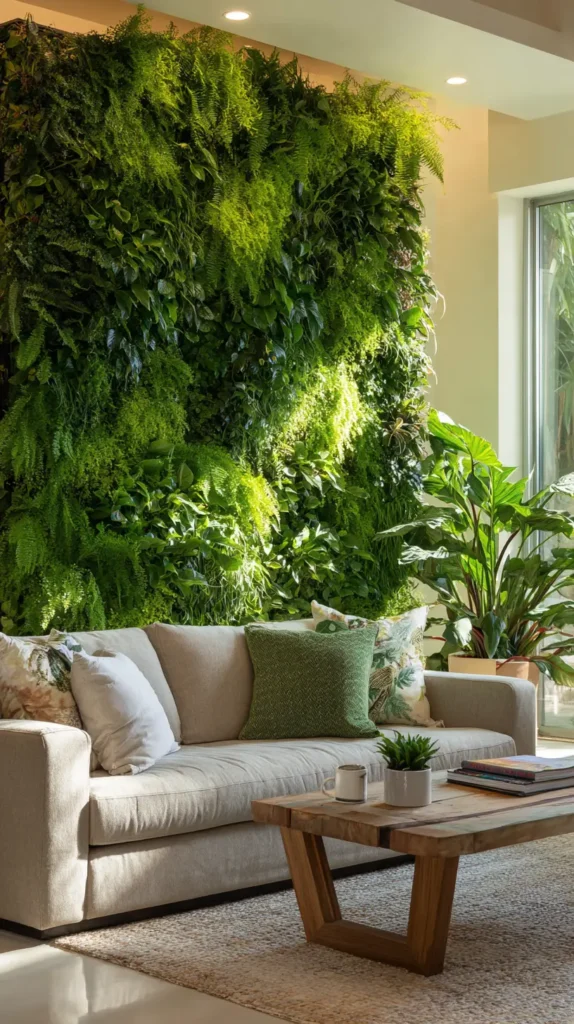
For a truly show-stopping, high-impact design feature, move beyond potted plants and embrace the concept of a living wall. This is the ultimate expression of biophilic design, a vertical tapestry woven from lush, living greenery that transforms an entire wall into a breathtaking work of art. A living wall can feel both wild and incredibly sophisticated, creating an immersive experience that instantly becomes the focal point and talking point of your home.
This concept is surprisingly versatile. It can be a grand, floor-to-ceiling installation in a large living room or a more contained “living picture frame” hung above a sofa. By choosing a variety of plants with different textures and shades of green—like the vibrant chartreuse of a Neon Pothos next to the feathery fronds of a fern and the deep green of a philodendron—you can create patterns and movement. It’s a bold design choice that erases the boundary between indoors and outdoors.
- Select plants with similar light and watering needs to ensure the entire wall thrives together.
- Choose a system that works for your space, from simple felt pocket planters to more complex modular panel systems.
- Proper installation is key to protecting your wall from moisture; ensure your chosen system has a waterproof backing.
- If the wall doesn’t receive enough natural light, install a dedicated grow light to keep the plants healthy and full.
- Plan your design before you plant, arranging the plants on the floor first to visualize the final look.
Pro Design Tip: Create an ombré effect on your living wall by arranging plants with dark green foliage at the bottom, graduating to medium greens in the middle, and placing the lightest, most vibrant greens at the top.
Budget Consideration: A DIY living wall can be created affordably using a wooden pallet stood on its end and lined with landscape fabric, or by mounting a series of simple wall planters or rain gutters in a tight grid.
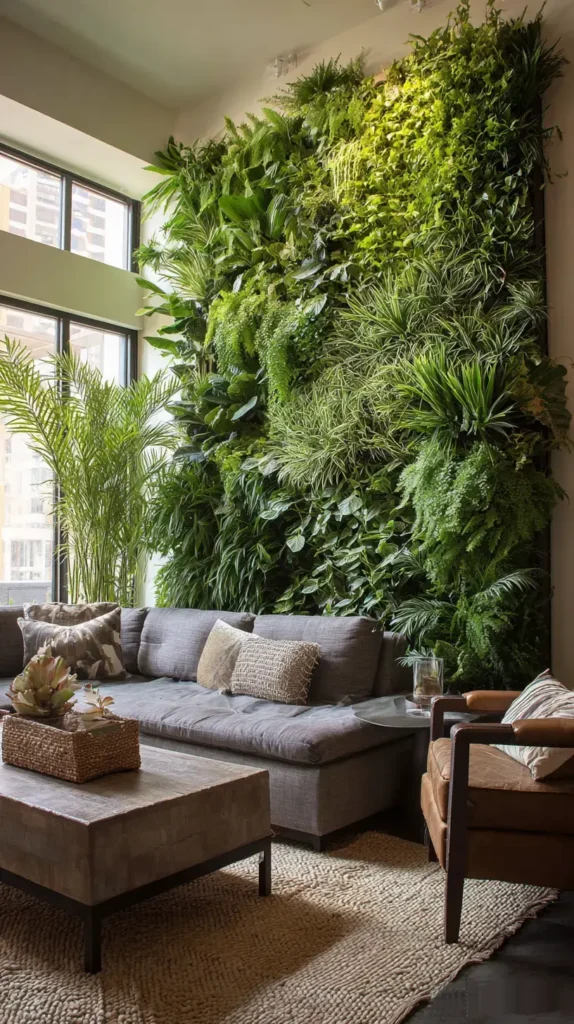
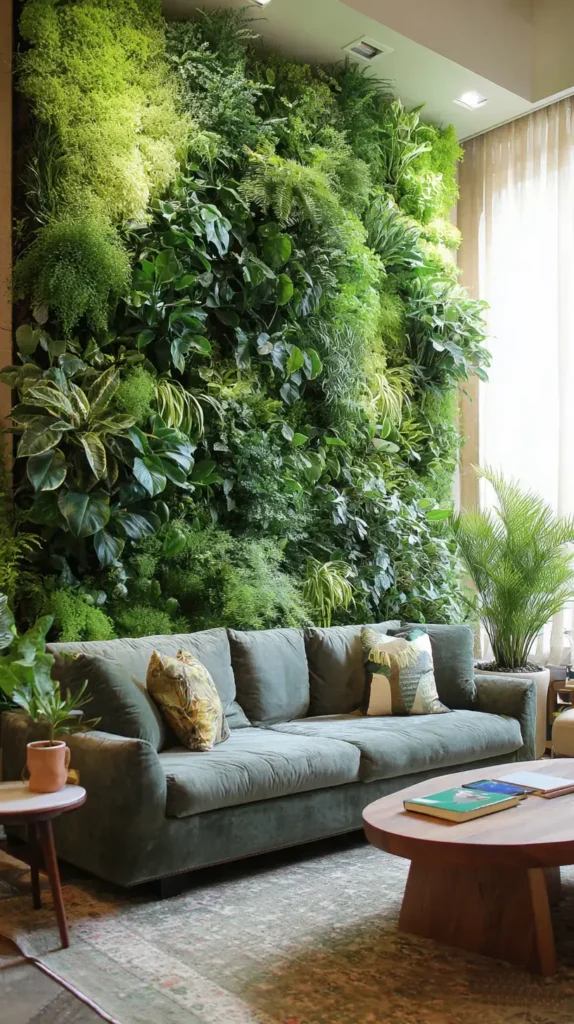
8. Whimsical Charm: A Delicate String of Pearls Display
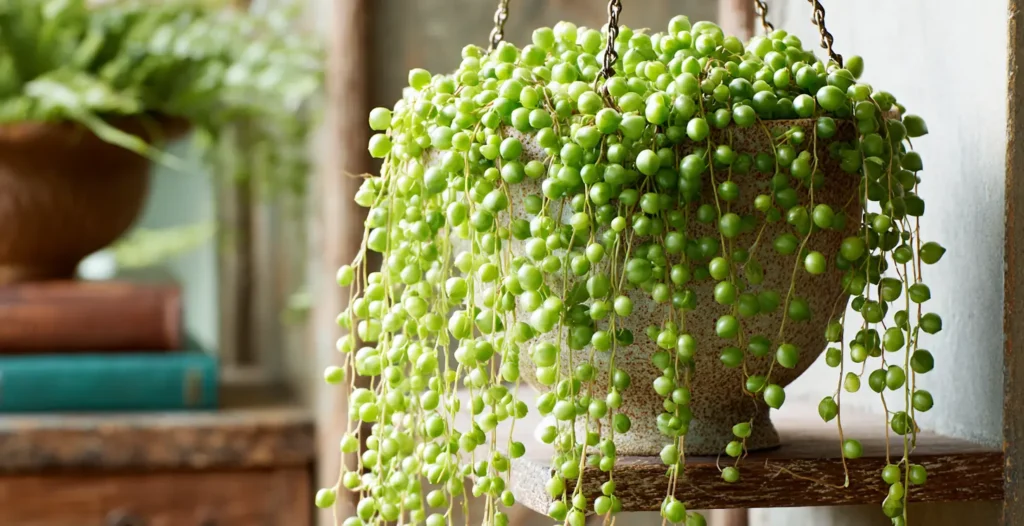
Introduce a touch of whimsical, fairy-tale charm to your decor with the unique and captivating String of Pearls (Senecio rowleyanus). This delightful succulent is unlike any other, featuring long, thread-like stems adorned with perfectly spherical, pea-like leaves. When placed in a hanging basket or on the edge of a high shelf, these strands cascade downwards, creating a delicate, bead-like curtain of greenery that is utterly enchanting.
The beauty of the String of Pearls lies in its delicate form and the playful texture it adds to a space. It’s the perfect plant to soften the hard edges of a bookshelf or to add a touch of life to a small, forgotten corner. Placed in a quirky head-shaped planter, it can look like a cascade of green hair. Its presence is subtle yet fascinating, inviting a closer look and adding a layer of intricate, natural detail to your living room.
- This plant needs very bright, indirect light to thrive. A spot near a window but shielded from harsh sun is ideal.
- Use a shallow pot with excellent drainage, as its root system is not deep.
- Water thoroughly, but only when the soil has completely dried out. The “pearls” will look slightly deflated when thirsty.
- Be gentle when handling, as the delicate strands can break easily.
- Position it where its trailing stems can hang freely without being brushed against frequently.
Pro Design Tip: Create a multi-layered cascade by pairing a String of Pearls with other trailing “string” plants, like the String of Hearts or String of Dolphins, in a tiered hanging planter. The different shapes will create a stunning textural display.
Budget Consideration: Though sometimes tricky to find, the String of Pearls is very easy to propagate. Simply lay a healthy strand on top of soil, and it will root at the nodes, allowing you to create new plants from a single purchase.
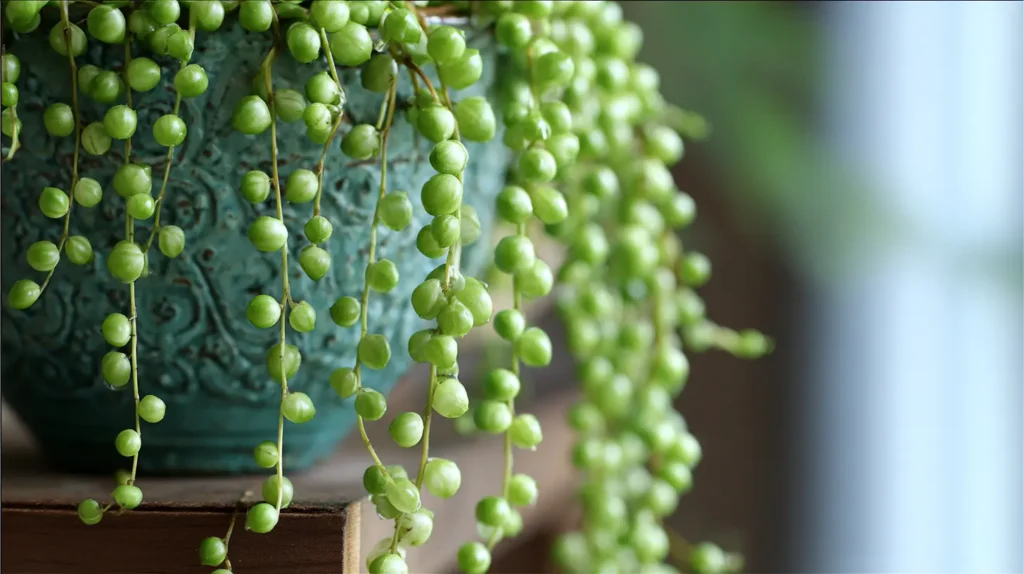
9. Desert Modern: A Sculptural Cactus Arrangement
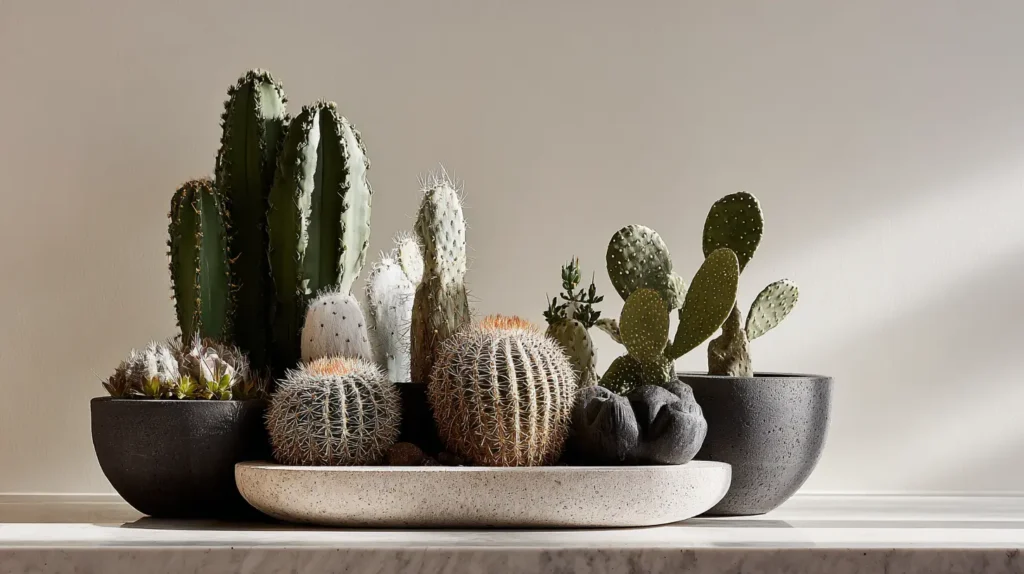
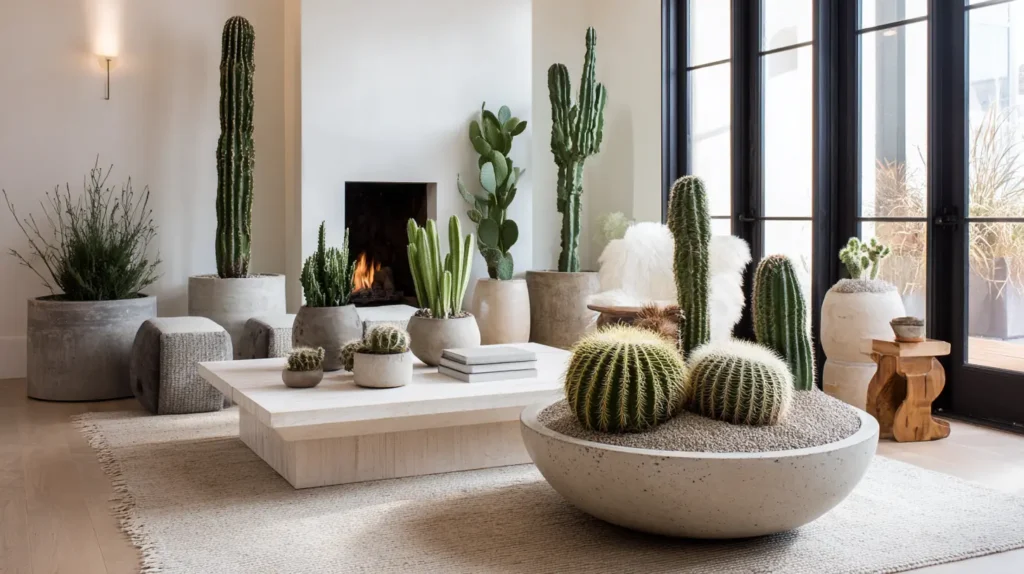
Channel a chic, desert-modern vibe by creating a curated arrangement of sculptural cacti. This aesthetic is all about celebrating bold, dramatic forms and clean lines. Cacti are nature’s minimalist sculptures, and when grouped together, they create a powerful statement that is both edgy and sophisticated. Think of a tall, columnar cactus providing a strong vertical line next to the spherical shape of a Golden Barrel Cactus and the paddle-like pads of a Prickly Pear.
This look is perfect for a sun-drenched living room with a minimalist or eclectic style. The arrangement can be housed in a single large, shallow bowl to create a contained desert landscape, or in a collection of individual pots made from concrete, terracotta, or matte black ceramic. The stark beauty of the cacti, with their varied spines and textures, provides a striking contrast to softer elements in the room, like a plush rug or a linen sofa.
- Find the sunniest spot in your living room; most cacti need several hours of direct sun daily to thrive.
- Use a very fast-draining soil mix specifically designed for cacti and succulents.
- When grouping in a single planter, choose cacti with similar light and water requirements.
- Water very sparingly. In the winter, you may only need to water once a month or even less.
- Use thick gloves or tongs when handling to protect yourself from sharp spines.
Pro Design Tip: Top-dress your cactus arrangement with a layer of fine gravel, sand, or small river stones. This not only looks polished and professional but also helps keep the base of the plants dry.
Budget Consideration: You can create a stunning and diverse arrangement using very small, inexpensive cacti from a local garden center. Their slow growth means your miniature desert landscape will look great for a long time.
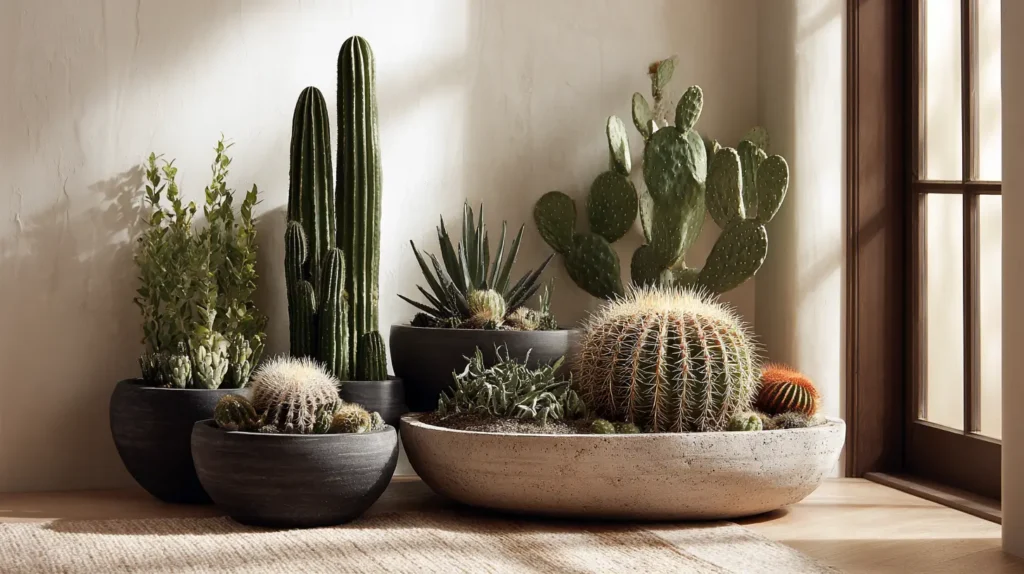
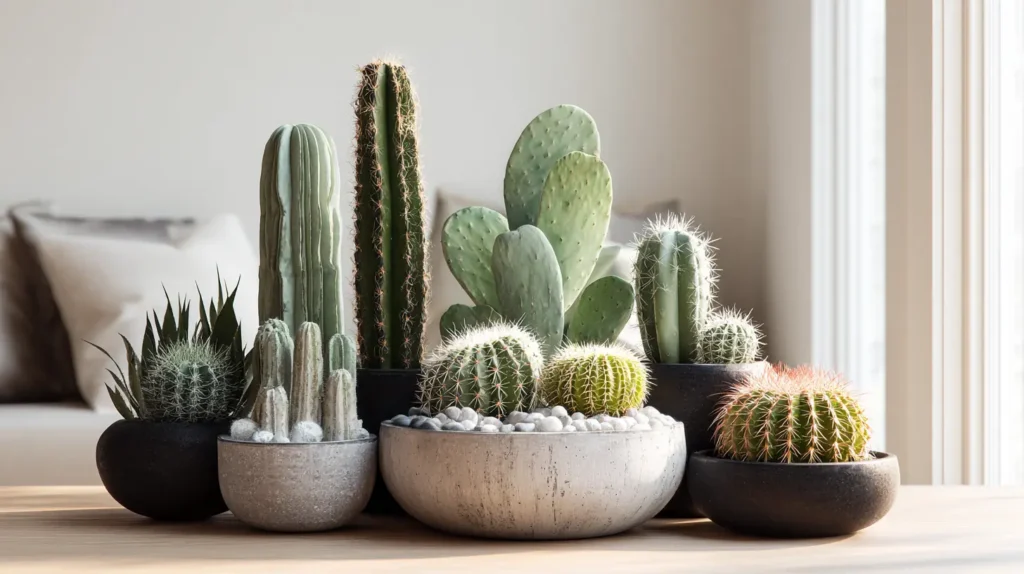
10. Zen Simplicity: The Understated ZZ Plant
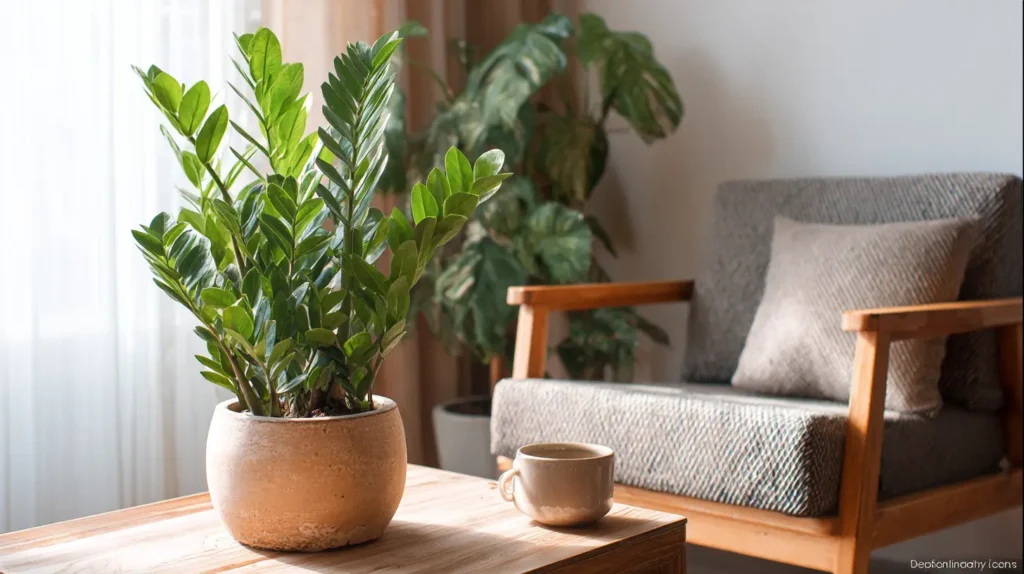
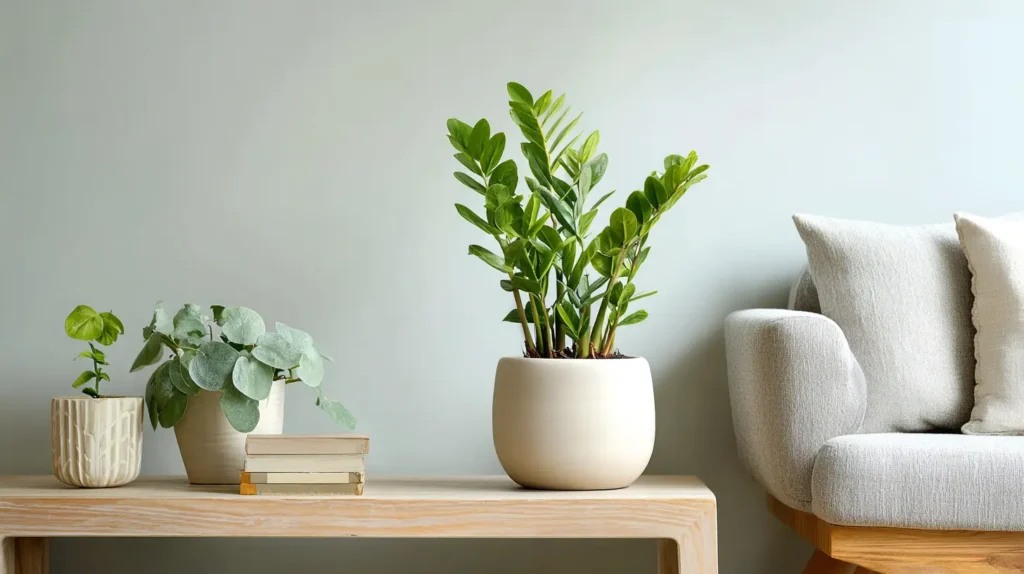
In a world of visual noise, the ZZ Plant (Zamioculcas zamiifolia) offers a moment of pure, Zen-like calm. Its beauty lies in its elegant simplicity and flawless structure. Graceful, arching stems are lined with perfectly symmetrical, waxy leaves that are so dark green and glossy they almost look polished. The ZZ Plant has a clean, uncluttered presence that brings a sense of harmony and balance to a room without demanding attention.
It is the embodiment of “less is more,” making it a perfect companion for minimalist, contemporary, and Scandinavian interiors. Its self-sufficient nature is part of its appeal; it is famously low-maintenance, tolerating low light and infrequent watering with unwavering grace. Placed in a simple ceramic pot on a clean-lined side table or as a solitary floor plant in a quiet corner, it exudes a sense of serene confidence, purifying the air while contributing to a peaceful, uncluttered atmosphere.
- This plant is extremely forgiving and can tolerate low light, but it does best in bright, indirect light.
- Allow the soil to dry out completely between waterings. Its underground rhizomes store water, making it very drought-tolerant.
- Choose a simple, elegant planter that doesn’t compete with the plant’s beautiful form.
- Its leaves are natural dust magnets; wipe them down with a damp cloth every so often to restore their high-gloss shine.
- Avoid direct sunlight, which can scorch the leaves and turn them yellow.
Pro Design Tip: For a highly sophisticated look, choose the ‘Raven’ ZZ Plant variety, which has new growth that emerges bright green and slowly matures to a stunning, dramatic near-black.
Budget Consideration: While a large ZZ Plant can be an investment, smaller ones are widely available and affordable. They are slow growers, but their durability means your investment will last for many, many years.
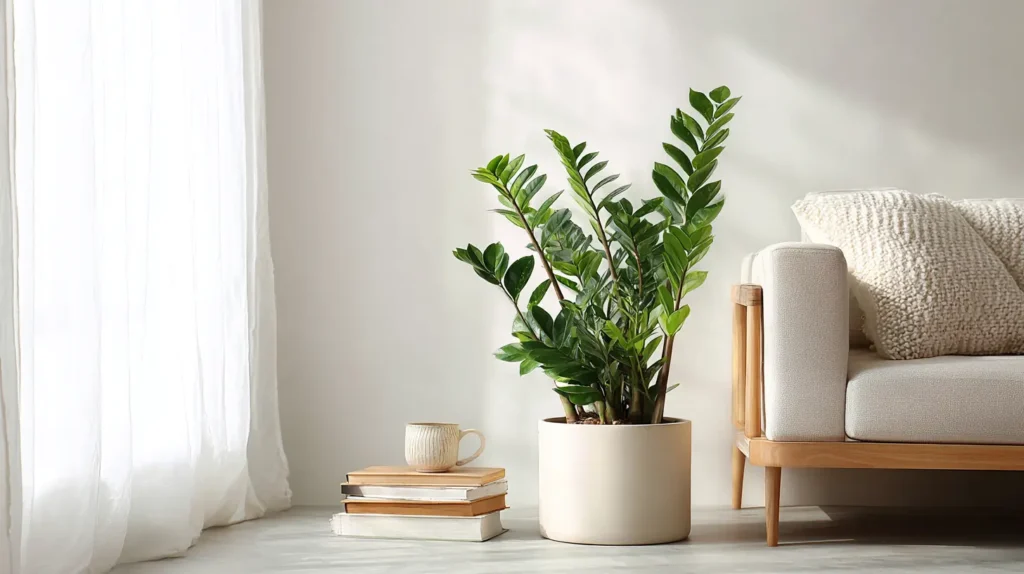
11. A Pop of Color: The Brilliant Flowering Anthurium
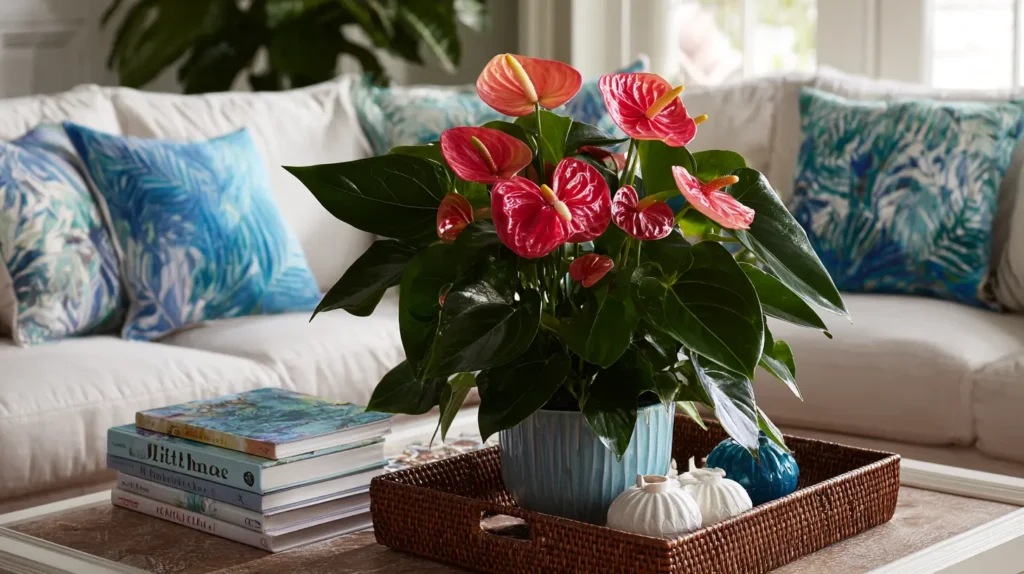
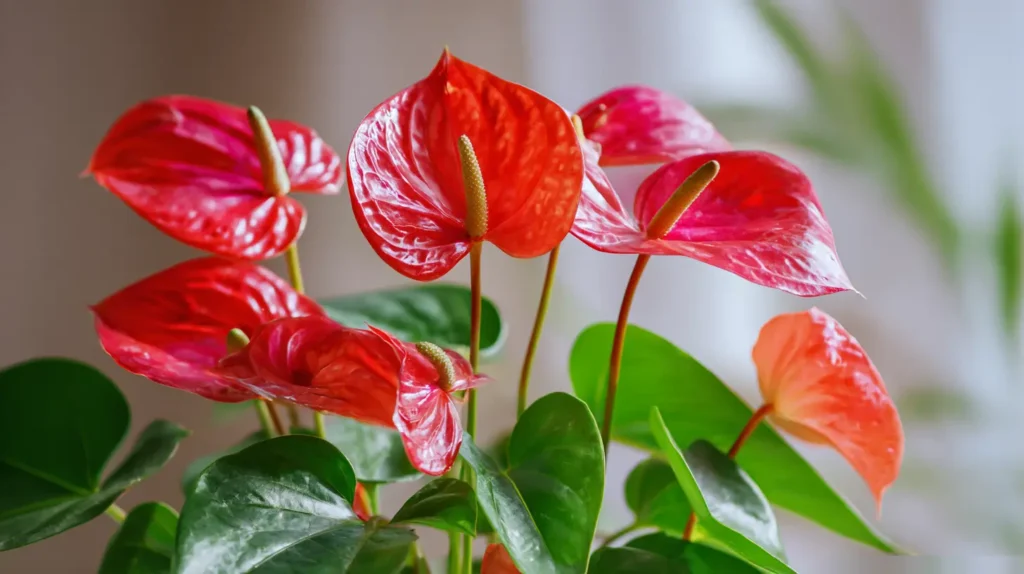
Why limit your indoor greenery to just green? Introduce a long-lasting, vibrant splash of color with the exotic and beautiful Anthurium. Known for its brilliant, heart-shaped “flowers”—which are actually colorful, waxy leaves called spathes—the Anthurium offers a pop of glossy red, pink, or white that can last for months. It’s the perfect way to add the visual appeal of a floral bouquet with the longevity of a houseplant.
An Anthurium is a living art piece that brings a cheerful, tropical energy to any space. It’s perfectly scaled for a coffee table, a side table, or a bright spot on a bookshelf where its vibrant color can truly shine. The contrast between its glossy, colorful spathes and its dark green, heart-shaped leaves is stunning. It provides a focal point of color that can tie into other accents in your room, like throw pillows or artwork.
- Anthuriums thrive in bright, indirect light. Too much sun can burn the leaves, while too little will reduce flowering.
- Keep the soil consistently moist but never soggy. They appreciate a humid environment.
- Use a well-draining, chunky potting mix, similar to what you would use for orchids.
- Feed it with a diluted fertilizer during the growing season to encourage more blooms.
- Snip off any fading flowers at the base of their stem to redirect the plant’s energy into new growth.
Pro Design Tip: Create a stunning tropical vignette by placing a brightly colored Anthurium on a decorative tray alongside a piece of coral or a beautiful seashell and a scented candle.
Budget Consideration: Anthuriums are a great value compared to fresh-cut flowers. For a similar price, you get a “bouquet” that can last for many months and will continue to produce new blooms with proper care.
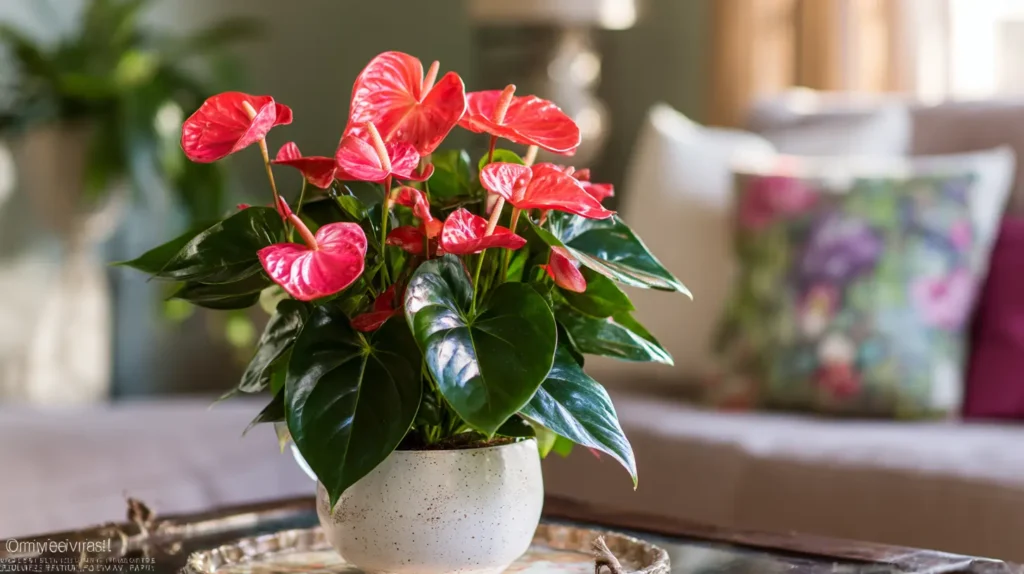
12. Fresh and Airy: A Lush Boston Fern Haven
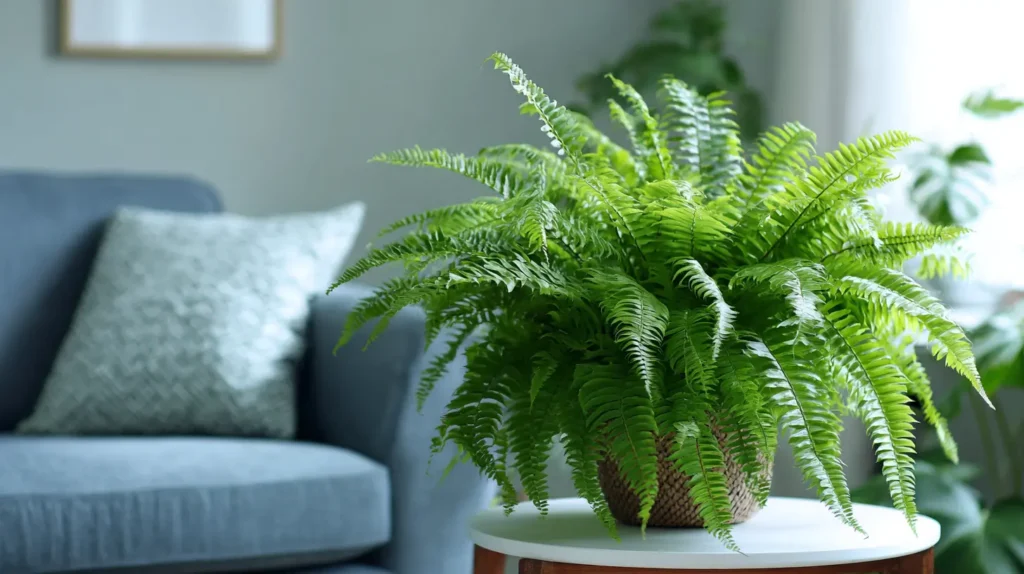
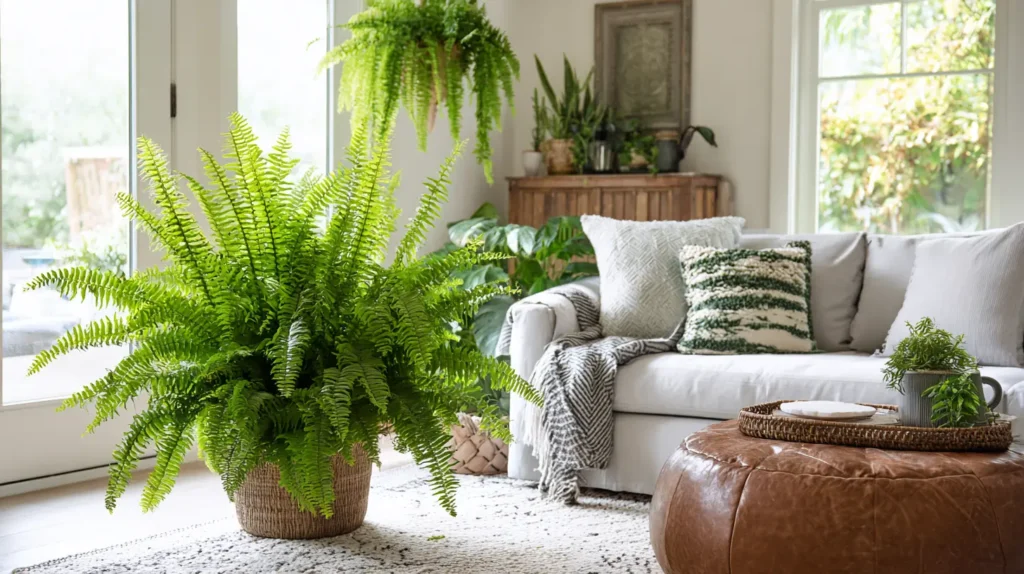
To create a space that feels utterly fresh, lush, and full of life, there is nothing quite like a classic Boston Fern. Its arching fronds are a riot of feathery, delicate green leaves, creating a soft, full texture that instantly makes a room feel more comfortable and established. A healthy Boston Fern is a statement of abundance, its generous foliage spilling out in all directions to create a verdant, cloud-like effect.
This plant is perfect for bringing a touch of timeless, almost Victorian, elegance to your living room. It looks absolutely stunning when placed on a tall plant stand, where its fronds can arch freely, or in a hanging basket, where it can create a beautiful floating canopy of green. It’s the ideal plant for softening hard architectural corners, filling empty space with vibrant life, and cultivating an atmosphere of serene, natural tranquility.
- Boston Ferns love high humidity. This makes them a great choice for bathrooms, but in a living room, they will appreciate regular misting or a nearby humidifier.
- Keep their soil consistently moist; never let it dry out completely.
- Provide them with bright, indirect light. A spot near a north-facing window is often perfect.
- Yellowing leaves can be a sign of low humidity or improper watering.
- Gently trim away any brown or dead fronds at the base to keep the plant looking its best.
Pro Design Tip: Make a Boston Fern the centerpiece of your decor by placing a large, magnificent specimen on a simple, elegant pedestal in front of a large mirror. The reflection will double its lushness, creating an incredibly dramatic effect.
Budget Consideration: Boston Ferns are very common and affordable, especially in the spring and summer. A small plant can grow into a magnificent specimen within a single season with the right care.
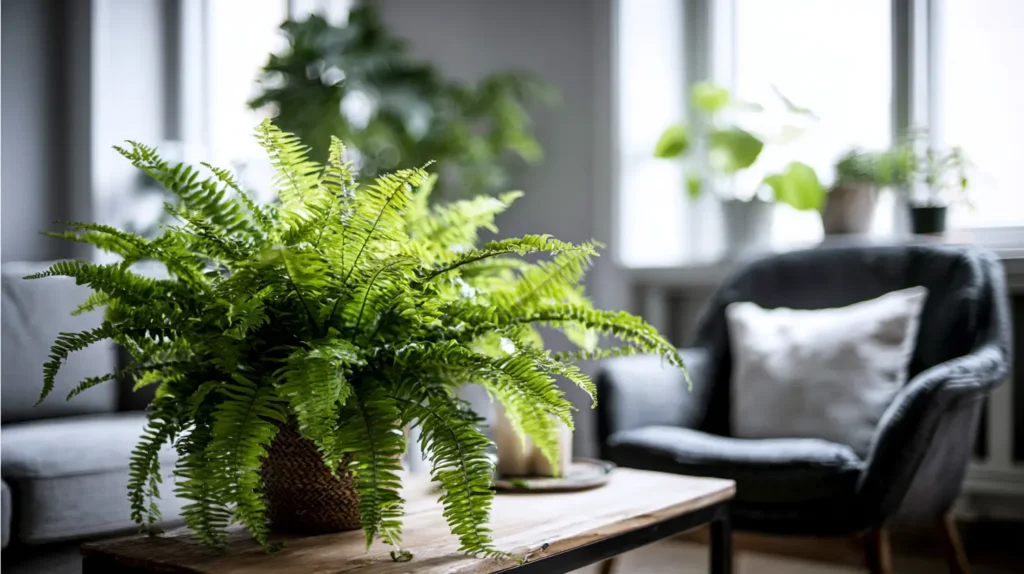
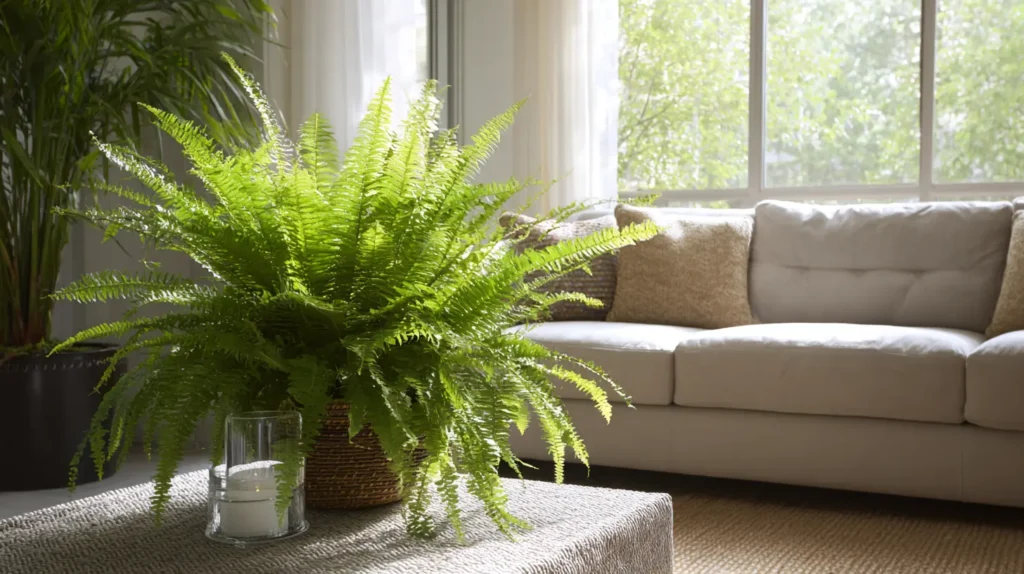
13. Functional Beauty: Air-Purifying Peace Lilies
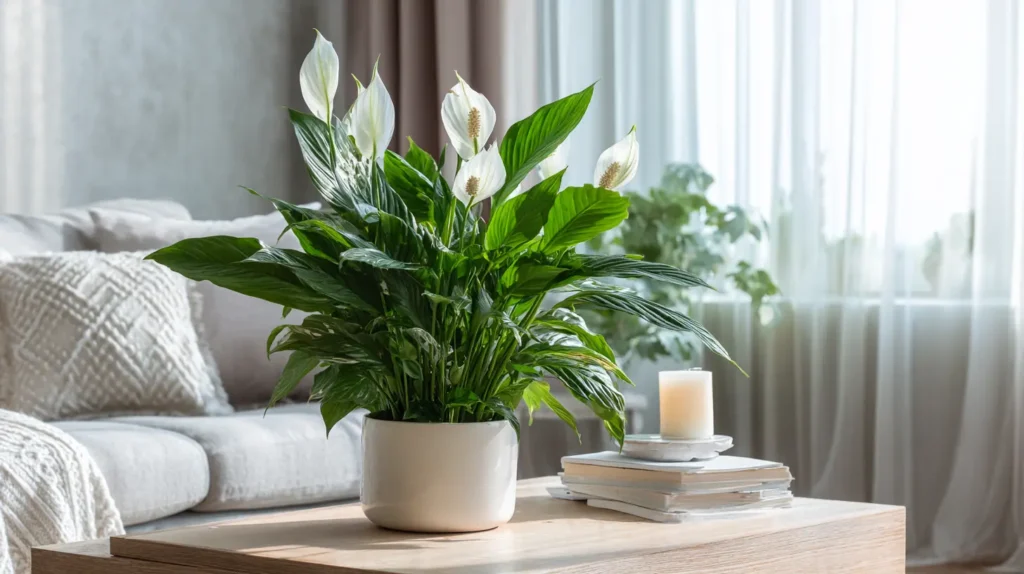
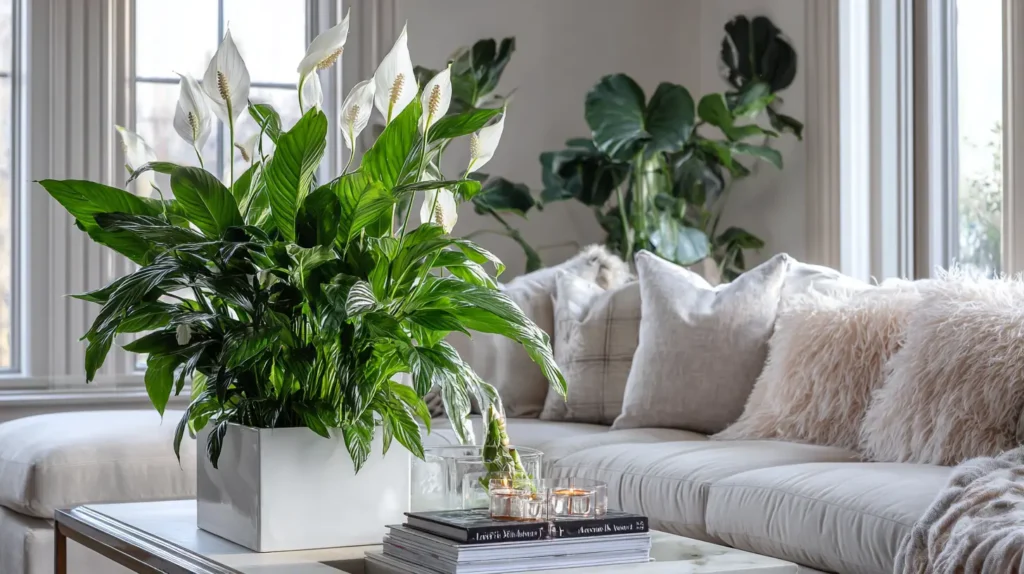
Marry elegance with function by incorporating the beautiful and hard-working Peace Lily (Spathiphyllum) into your living room. This plant is celebrated not only for its deep, glossy green leaves and graceful white blooms but also for its exceptional air-purifying abilities. It’s one of NASA’s top-rated plants for removing common household toxins like formaldehyde and benzene from the air, making your living room a healthier space.
The Peace Lily has a refined, sophisticated presence. Its elegant white spathes rise on slender stems above the lush foliage, providing a serene and minimalist floral display. It’s incredibly adaptable, thriving in lower light conditions where many other plants would struggle. This makes it a perfect choice for a coffee table, a bedroom dresser, or a corner that doesn’t get direct sun. It’s a plant that works hard for you while looking effortlessly chic.
- Peace Lilies prefer medium to low indirect light. Avoid direct sunlight, which can scorch their leaves.
- They are “dramatic” plants and will visibly droop when they need water, taking the guesswork out of your watering routine.
- Wipe down their large leaves occasionally to keep them clean and help with air purification.
- The white “flowers” are actually modified leaves. Once they turn brown, simply snip them off at the base.
- Keep them away from pets, as they can be toxic if ingested.
Pro Design Tip: For a clean and modern look, plant your Peace Lily in a self-watering planter. This ensures consistent moisture, which the plant loves, and the sleek design of many self-watering pots complements its elegant foliage.
Budget Consideration: Peace Lilies are widely available and very reasonably priced for their size and air-purifying benefits. They are a fantastic “starter” plant for anyone new to houseplants.
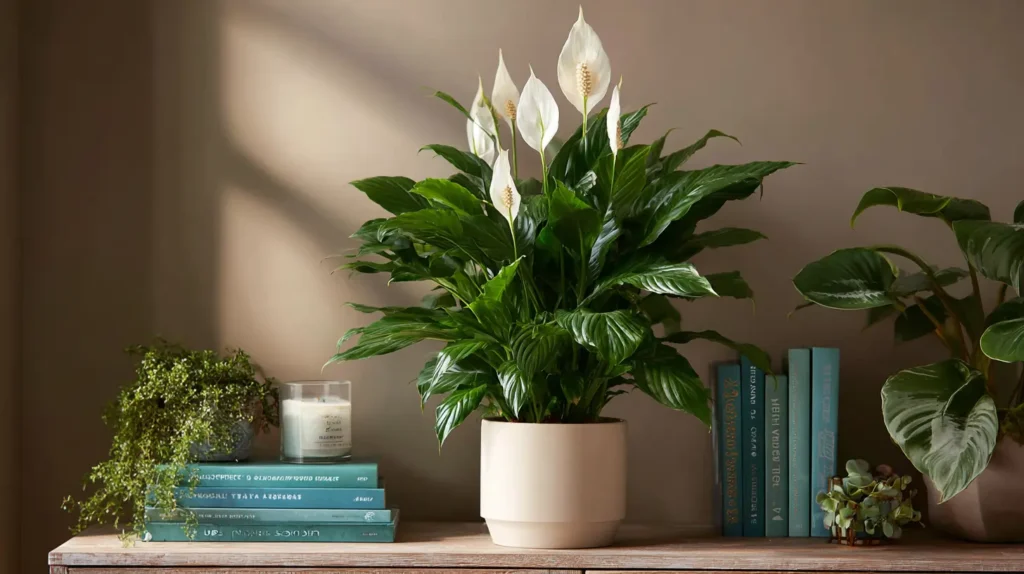
14. Elevated Style: Using Pedestals and Plant Stands
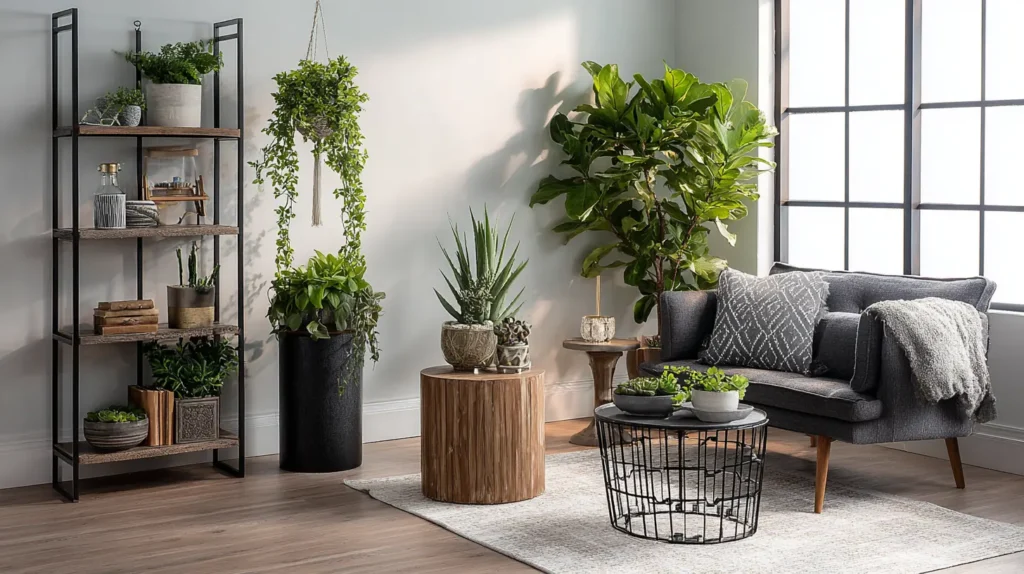
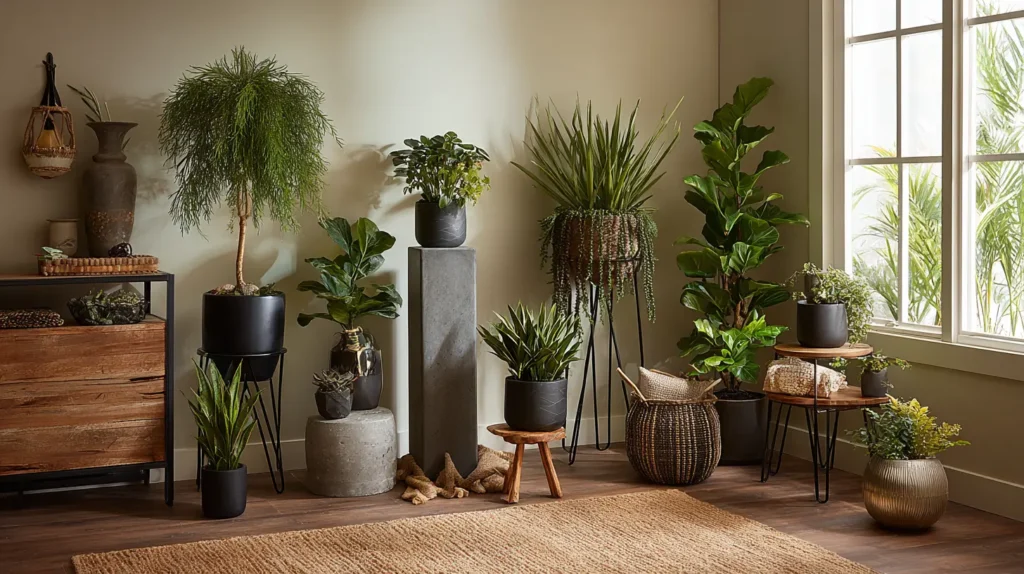
Take your plant styling to the next level—literally—by incorporating a variety of pedestals and plant stands. Elevating a plant instantly transforms it from a simple object on the floor into a curated design element. It’s a simple trick that designers use to create visual interest, play with height, and give special plants the showcase they deserve. A stand can transform a mid-sized plant into a feature piece, preventing it from being visually lost in the room.
The style of the stand itself becomes part of the decor. A sleek, black metal stand can add a touch of modern industrial flair, while a warm, turned-wood stand can enhance a mid-century or bohemian vibe. By using stands of different heights, you can create a dynamic, multi-layered plant grouping that feels more like a deliberate installation than a random collection. It’s about giving your plants a stage on which to perform.
- Choose a stand that is sturdy and appropriately scaled for your plant and its pot.
- Use a tall stand to give a trailing plant, like a String of Pearls or English Ivy, more vertical space to cascade.
- A low stool or stand can give a bushy plant, like a fern, just enough lift to keep its fronds off the floor.
- Match the material of your plant stand to other finishes in your room (e.g., brass legs on a stand to match a brass lamp).
- Group a few plants on stands of varying heights together to create a cohesive and eye-catching corner.
Pro Design Tip: Use a plant stand to elevate a beautiful but smaller plant next to a larger piece of furniture, like an armchair. This allows the plant to hold its own visually and be appreciated at eye level when you’re seated.
Budget Consideration: You don’t need to buy expensive, dedicated plant stands. A simple wooden stool, a stack of sturdy books, or even an inverted basket can work beautifully as a stylish, budget-friendly pedestal.
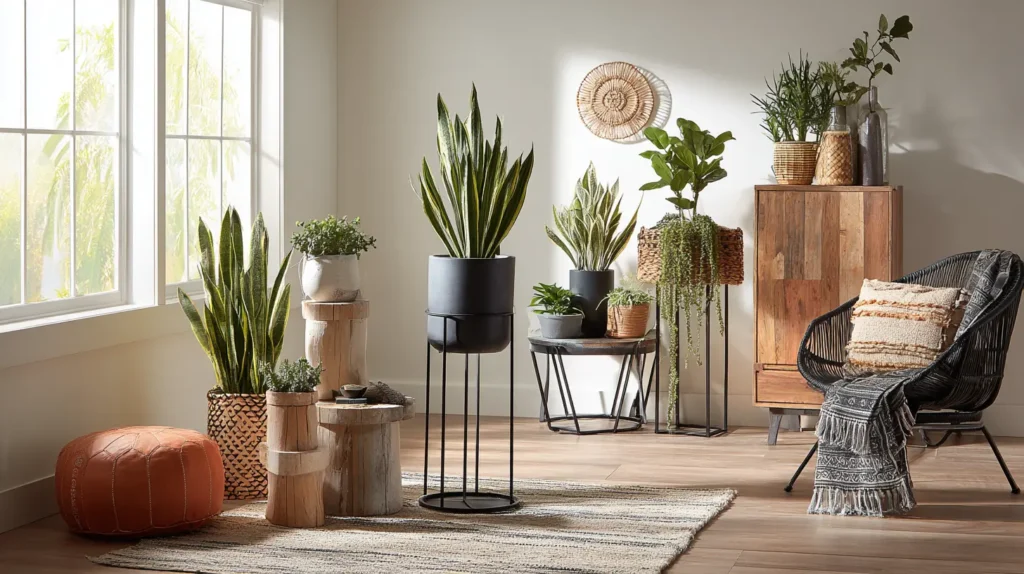
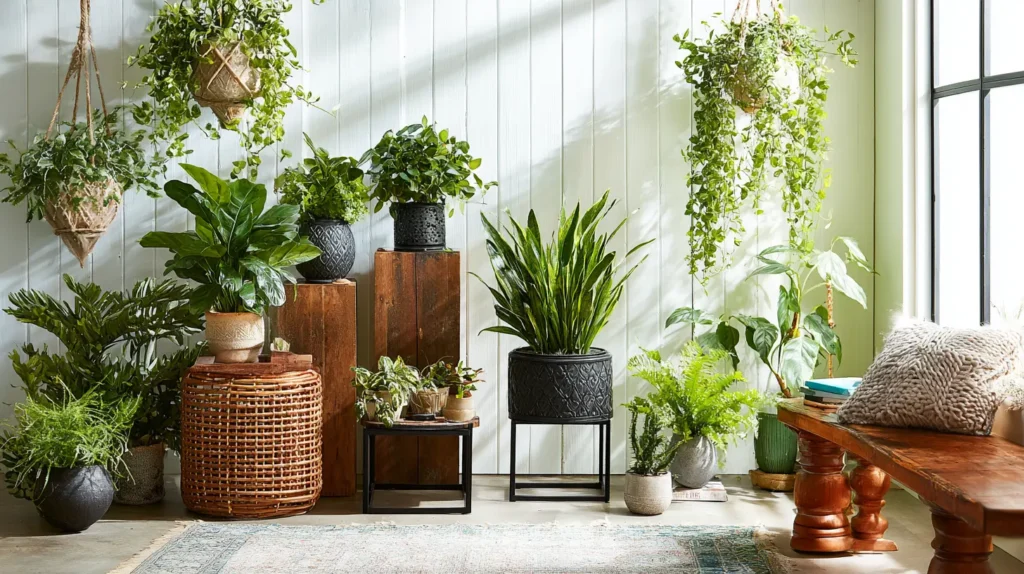
15. The Hanging Garden: Bohemian Macrame Hangers
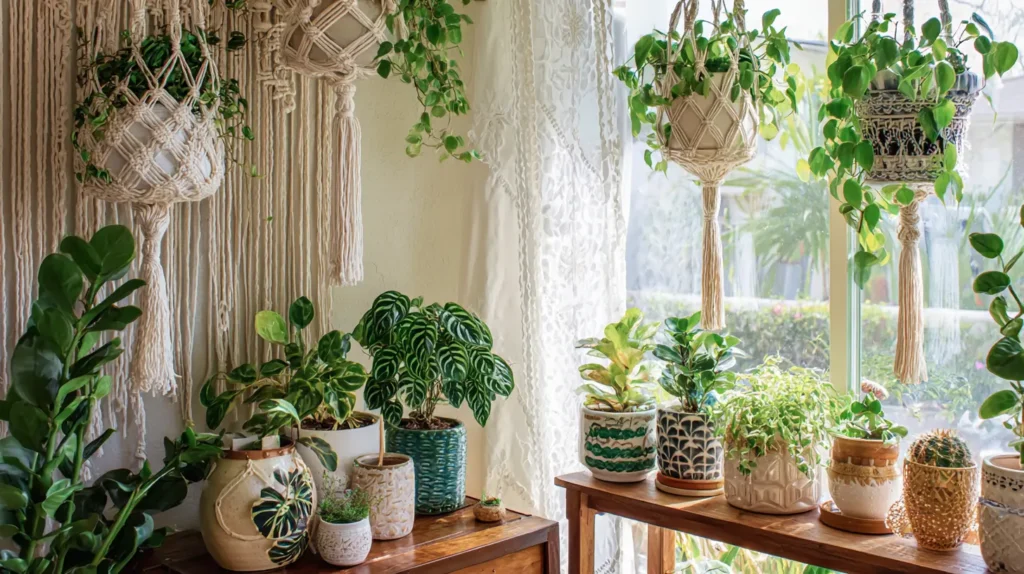
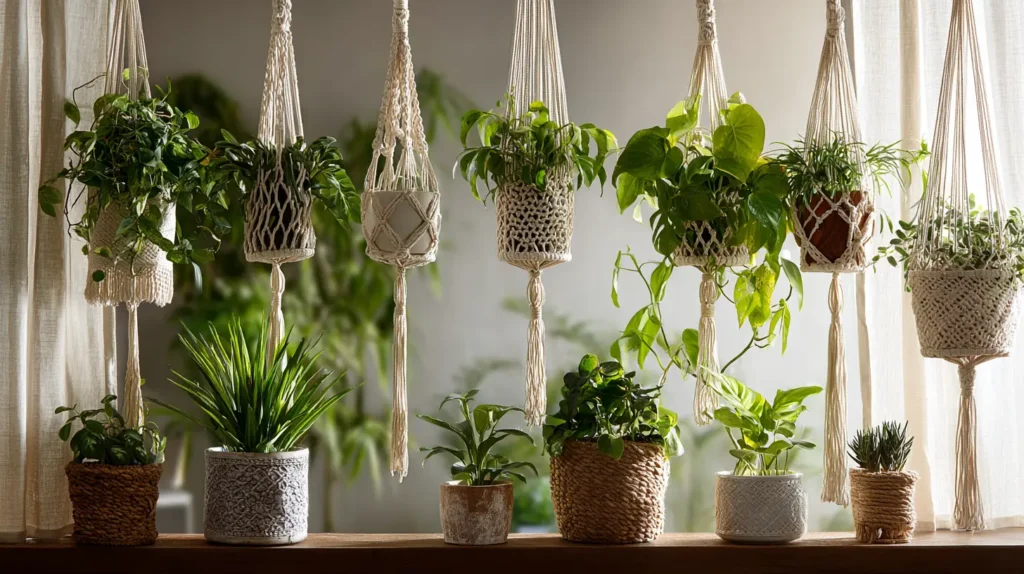
Create a cozy, bohemian-inspired hanging garden by suspending your plants in textural macrame hangers. This timeless craft adds a layer of handmade warmth and artistic flair to your living room, turning simple potted plants into beautiful, floating features. Hanging plants is a brilliant space-saving solution, allowing you to add lush greenery without taking up any precious floor or surface space.
The intricate knots and patterns of a macrame hanger provide a beautiful textural contrast to the smooth leaves of a plant. They are perfect for framing a window, softening a stark corner, or adding life above a sofa. Plants with a vining or overflowing habit, such as Pothos, Spider Plants, or Heartleaf Philodendrons, are ideal candidates because they will spill beautifully from the woven cradle. It’s a look that feels relaxed, personal, and full of charm.
- Ensure you hang your plants from a secure anchor point in the ceiling, preferably a ceiling joist.
- Choose hangers of different lengths and styles to create a varied and interesting display.
- A pot with a lip or a curved shape will sit more securely in a macrame hanger.
- Remember that hanging plants may dry out faster, so check their soil moisture regularly.
- Group three hanging plants at staggered heights in a corner to create a stunning chandelier effect.
Pro Design Tip: For a unique and personalized touch, choose macrame hangers that incorporate colored beads or dip-dyed ends that match an accent color in your living room.
Budget Consideration: Learning a few basic macrame knots is surprisingly easy, and you can create your own custom hangers for a fraction of the retail price using affordable macrame cord from a craft store.
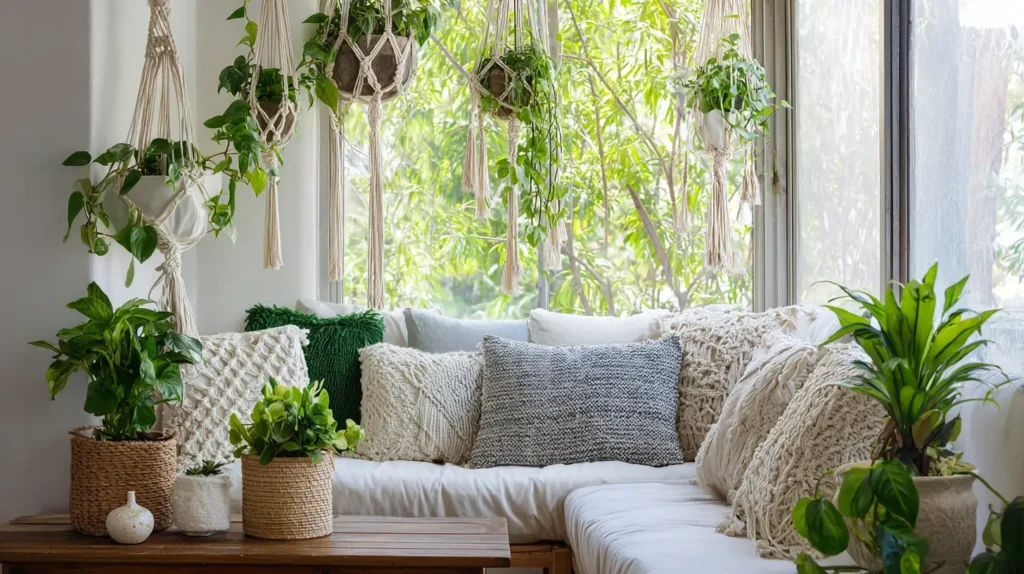
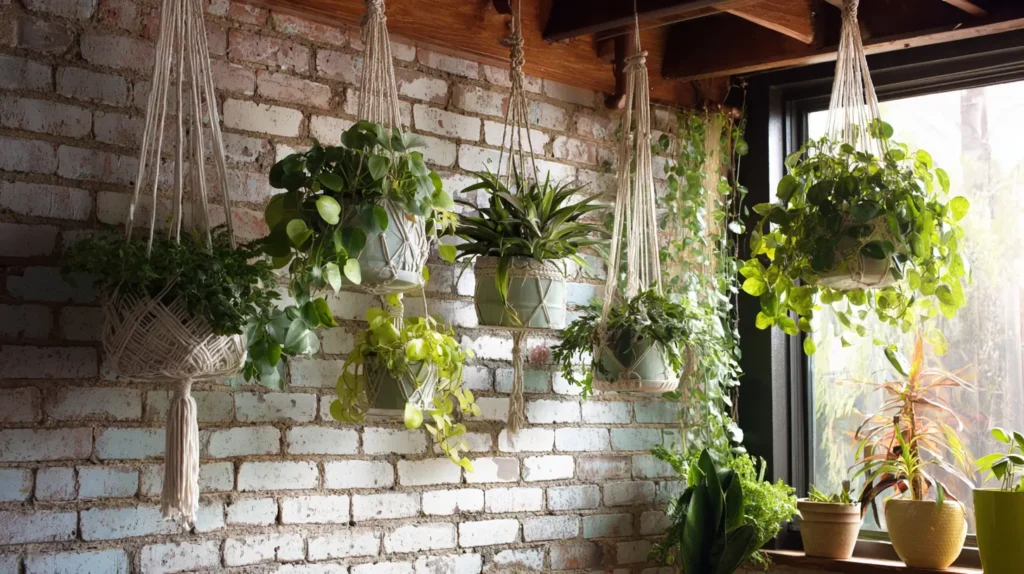
16. Miniature Worlds: The Enchanting Terrarium
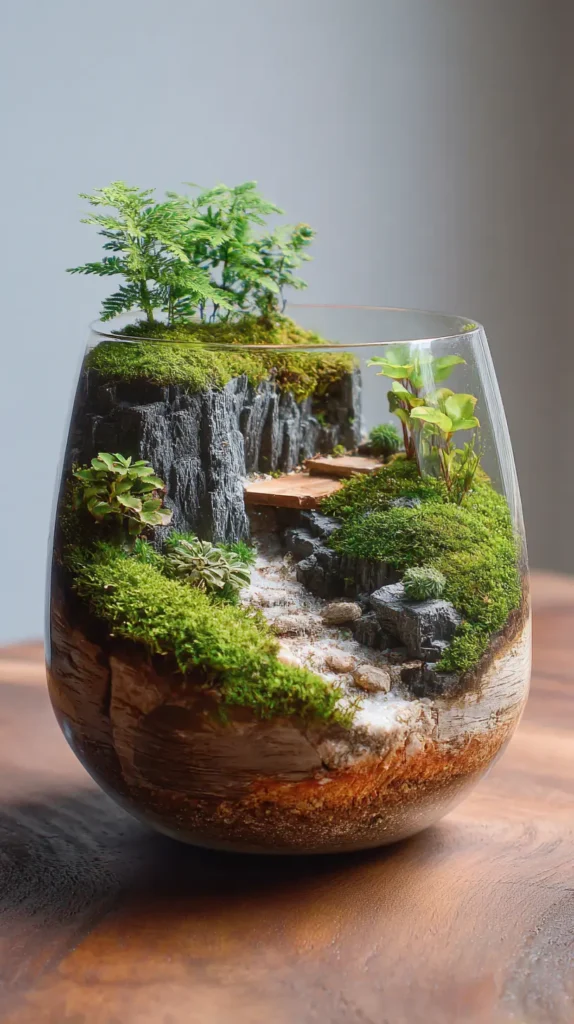
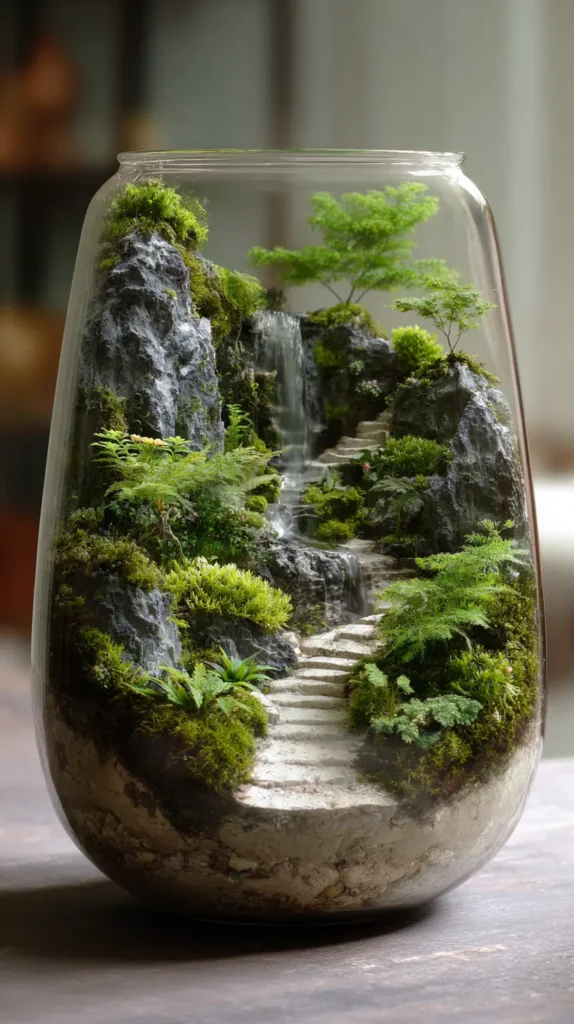
Capture a slice of a miniature, magical world under glass by creating an enchanting terrarium. A terrarium is a self-contained ecosystem, a tiny landscape that invites you to lean in and appreciate the delicate details of nature. It serves as a fascinating, living centerpiece for a coffee table or a point of intrigue on a bookshelf, adding a touch of whimsical wonder to your living room.
Building a terrarium is a creative process. You can design a lush, humid rainforest in a closed glass vessel with mosses and ferns, or a stark, arid desert in an open glass bowl with tiny succulents and cacti. The layers of rock, charcoal, and soil are visible through the glass, adding to its geological beauty. It’s a perfect blend of science, nature, and art that brings a unique and captivating element to your home.
- For a closed terrarium, choose small plants that love high humidity, such as nerve plants, small ferns, and mosses.
- Always include a layer of activated charcoal at the bottom to keep the environment fresh.
- Use long tweezers and tools to carefully place the plants and decorative elements inside the vessel.
- Once established, a closed terrarium requires very little watering, as it recycles its own moisture.
- Avoid placing terrariums in direct sunlight, which can overheat the glass and scorch the plants inside.
Pro Design Tip: Add a single, interesting object to your terrarium to create a focal point and tell a story—a beautiful crystal, a miniature ceramic figurine, or a unique piece of weathered wood.
Budget Consideration: You don’t need a special kit. A beautiful terrarium can be made in any clear glass vessel you have on hand, like a large pasta jar, a goldfish bowl, or a vintage cloche found at a thrift store.
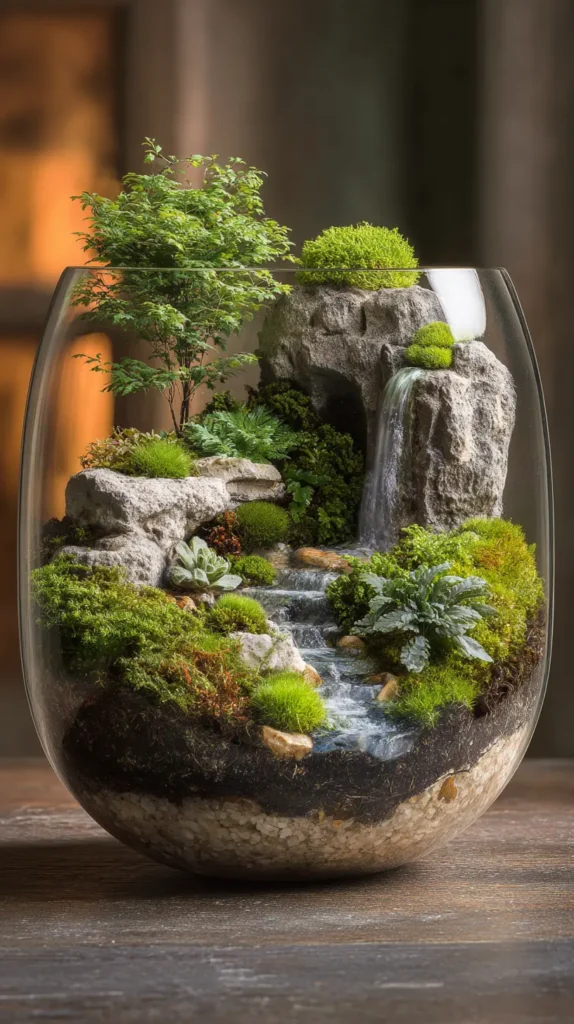
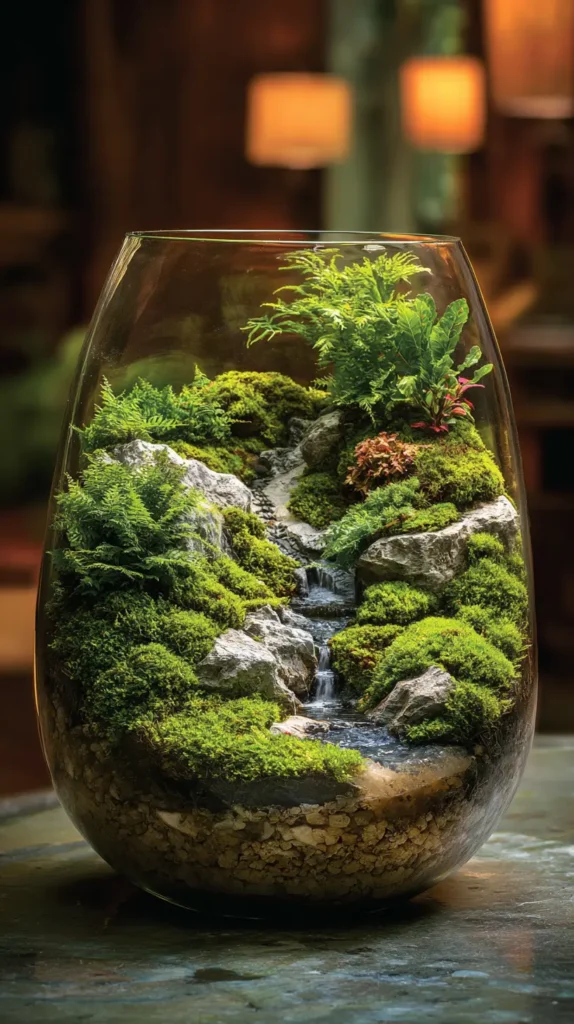
17. Mediterranean Grace: The Sophisticated Indoor Olive Tree
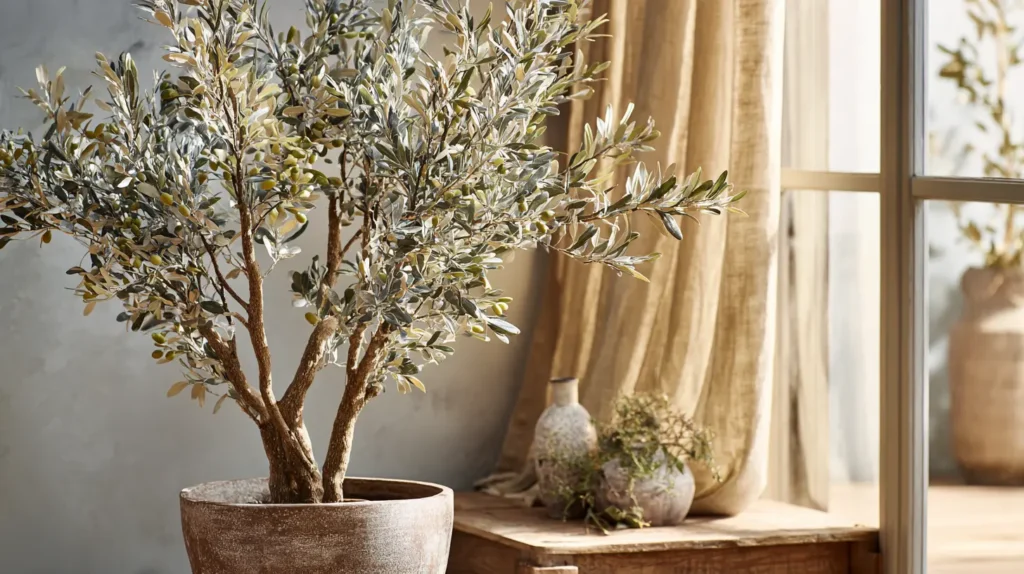
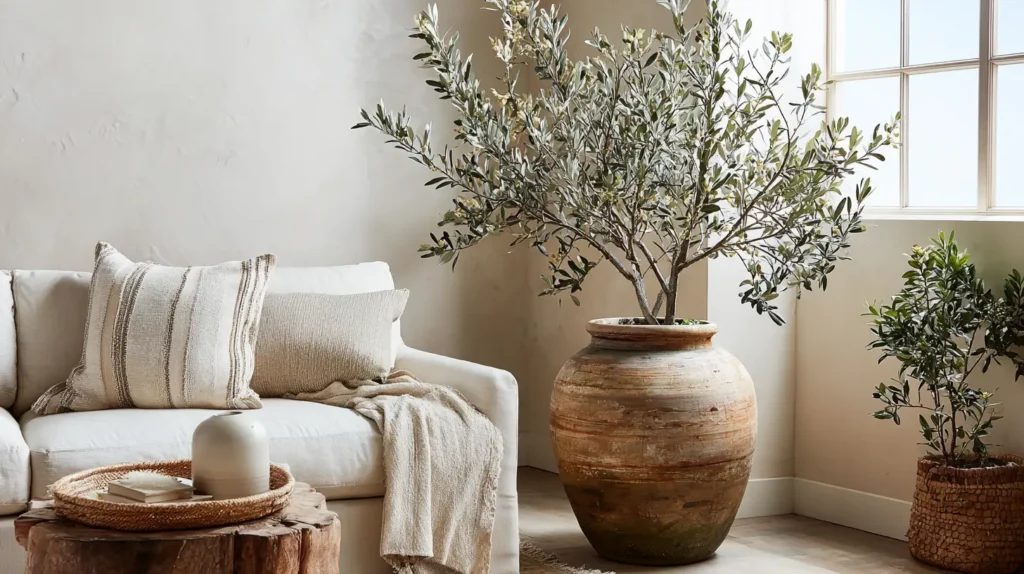
Evoke the sun-drenched, rustic elegance of the Mediterranean coast with a sophisticated indoor Olive Tree. Its slender, silvery-grey leaves and delicate, airy branches create a look of understated grace and timeless beauty. Unlike the dense foliage of many other houseplants, an Olive Tree has a light, ethereal quality that adds a sense of calm and refinement to a room without feeling heavy.
This tree is a perfect fit for homes with a minimalist, modern farmhouse, or organic modern aesthetic. Its muted color palette is incredibly soothing and pairs beautifully with a neutral decor scheme of whites, beiges, and natural wood tones. Placed in a rustic terracotta or simple concrete pot in a spot that gets plenty of sun, an Olive Tree is a chic and unexpected choice that brings a touch of ancient, sun-baked charm indoors.
- Indoor Olive Trees are sun-worshippers. They need a spot that gets at least six hours of bright, direct sunlight each day.
- Plant your tree in a fast-draining soil mix to prevent root rot.
- Allow the top few inches of soil to dry out completely before watering thoroughly.
- Good air circulation is important, so don’t place it in a tight, stuffy corner.
- Gently prune it in the spring to maintain its shape and encourage fuller growth.
Pro Design Tip: Underplant your Olive Tree with a low-growing, drought-tolerant herb like lavender or rosemary in a large pot. This not only looks beautiful and authentic but also fills the air with a lovely Mediterranean scent.
Budget Consideration: While large, mature Olive Trees can be expensive, smaller, younger trees are becoming more widely available and affordable. They are a worthy investment for their unique and sophisticated style.
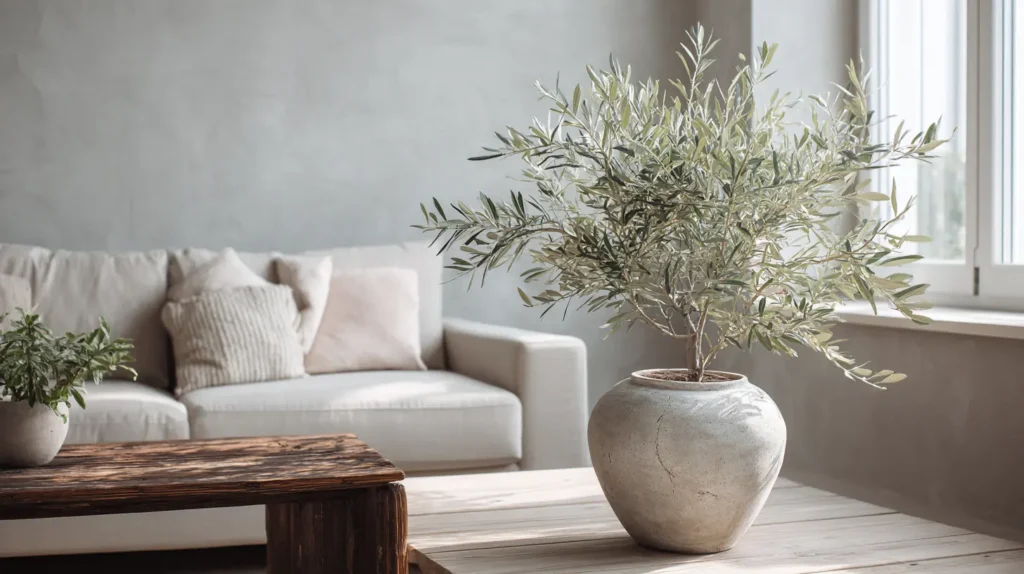
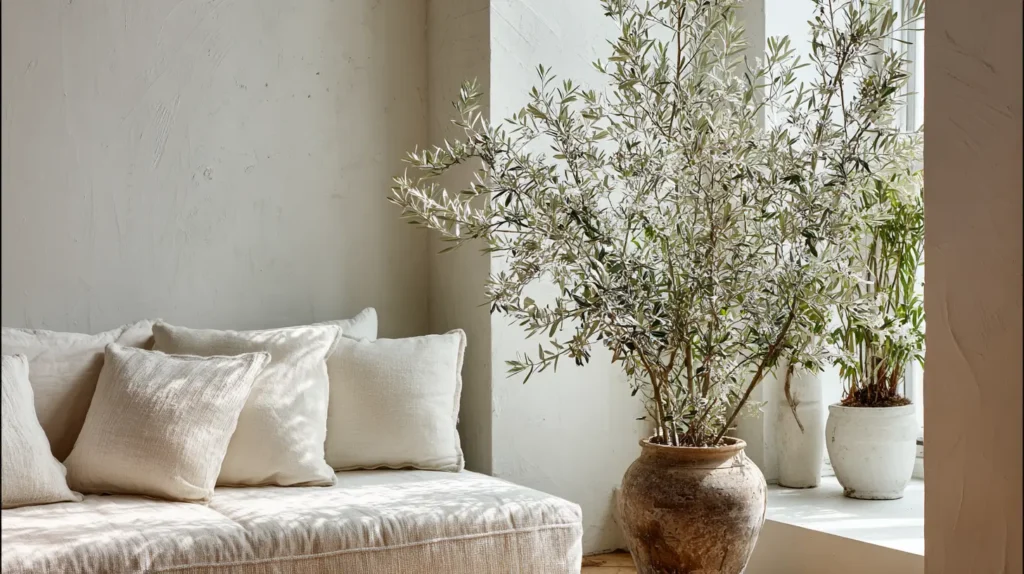
18. Wild and Free: A Towering Bird of Paradise
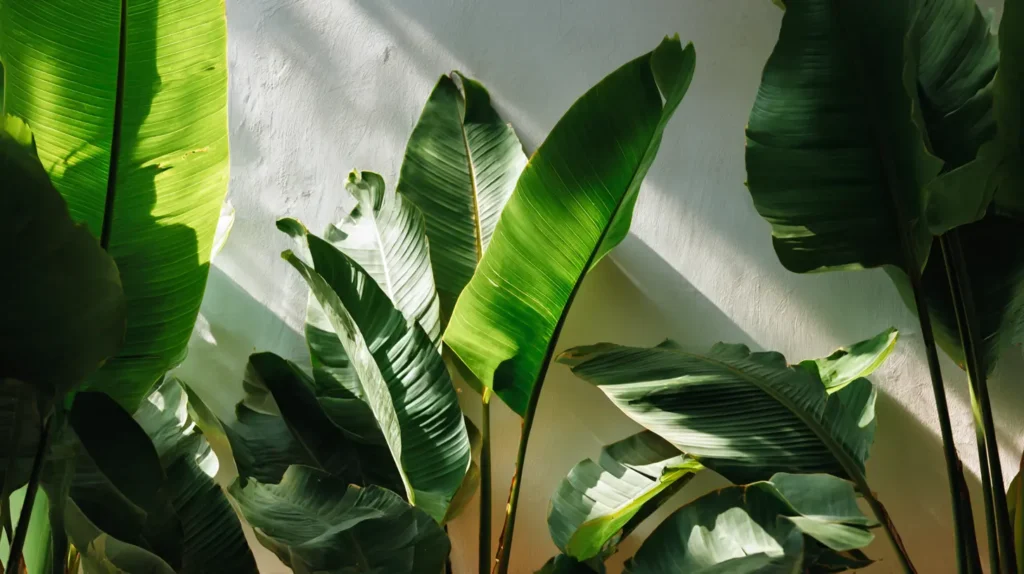
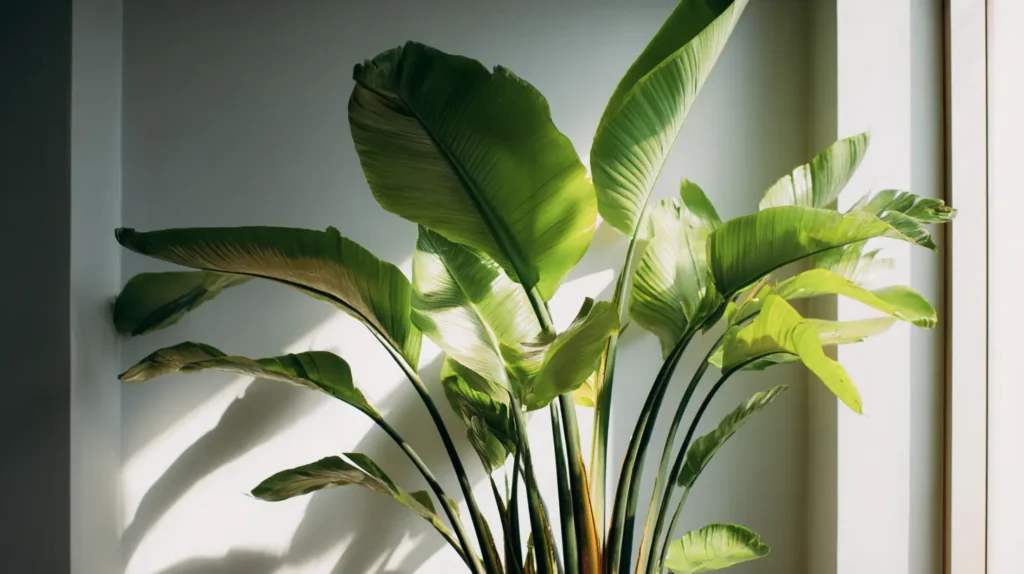
If you want to make a bold, unapologetically tropical statement, the Bird of Paradise (Strelitzia nicolai) is the plant for you. With its enormous, banana-like leaves that fan out from a central stalk, this plant has a wild, exuberant energy that is simply unmatched. It can grow to impressive heights indoors, creating a dramatic, jungle-like canopy that instantly transforms a room into a lush, exotic escape.
The sheer scale of its leaves makes it a powerful focal point. A single, well-placed Bird of Paradise can fill a large, empty corner with vibrant life, its expansive foliage creating a stunning silhouette against a window or a plain wall. It evokes a sense of freedom and natural abundance, perfect for bringing a dose of high-impact, resort-style luxury into your everyday living space.
- This plant craves bright light. Place it in one of the sunniest spots in your home for the best growth.
- Water it regularly during the growing season, keeping the soil lightly moist but not waterlogged.
- The large leaves will naturally split over time, which is a normal part of their character and helps them withstand wind in their native habitat.
- Rotate the plant every month or so to encourage its leaves to fan out evenly.
- Wipe down the leaves with a damp cloth to keep them clean and able to absorb as much light as possible.
Pro Design Tip: Position your Bird of Paradise near a window where its giant leaves can catch the morning or late afternoon sun. The light filtering through the leaves will cast beautiful, tropical-patterned shadows across your room.
Budget Consideration: A smaller Bird of Paradise is a great investment, as they are relatively fast growers. In a single season, a small plant can put out several new, large leaves and dramatically increase in size.
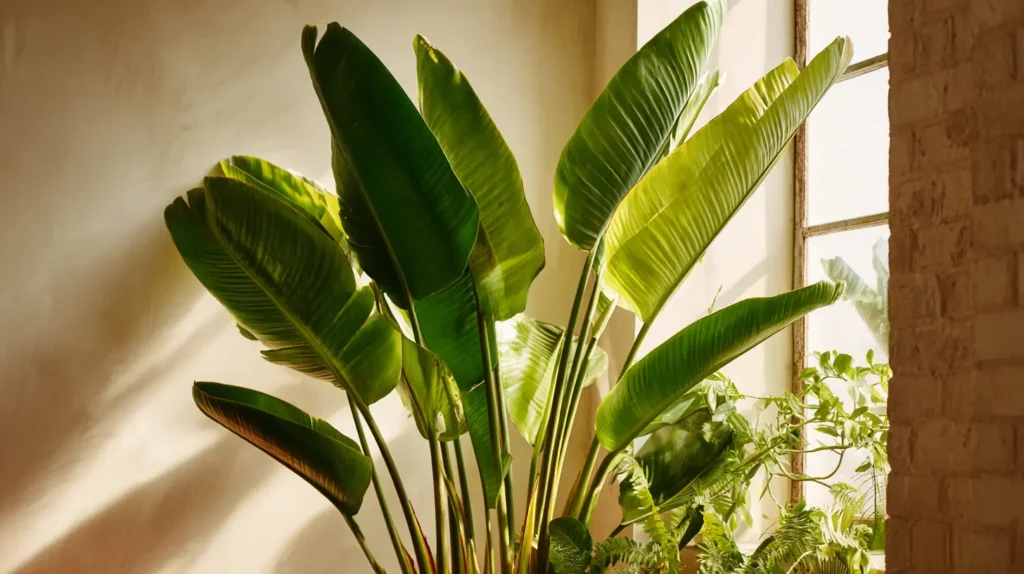
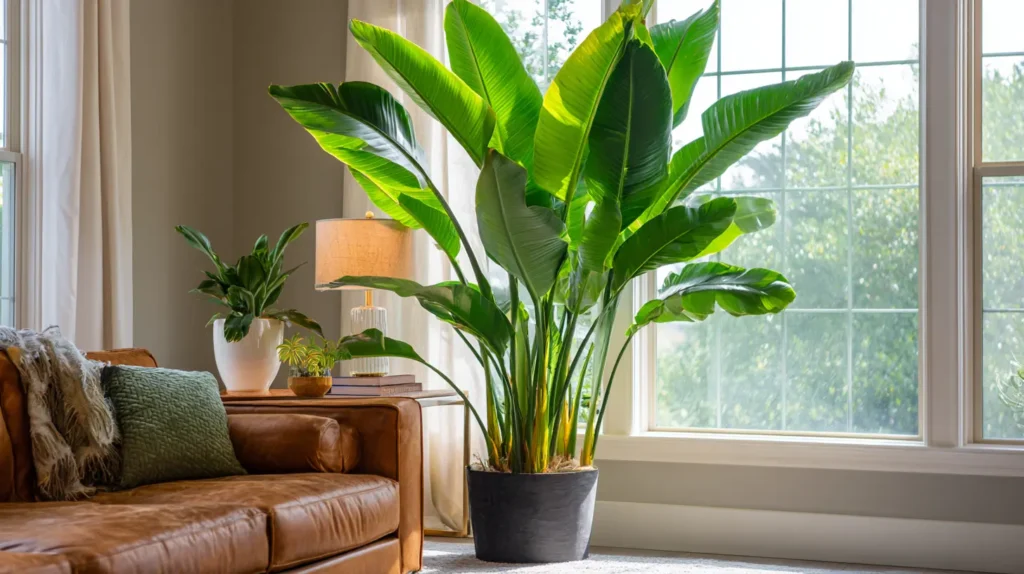
19. Ethereal Beauty: The Delicate Maidenhair Fern
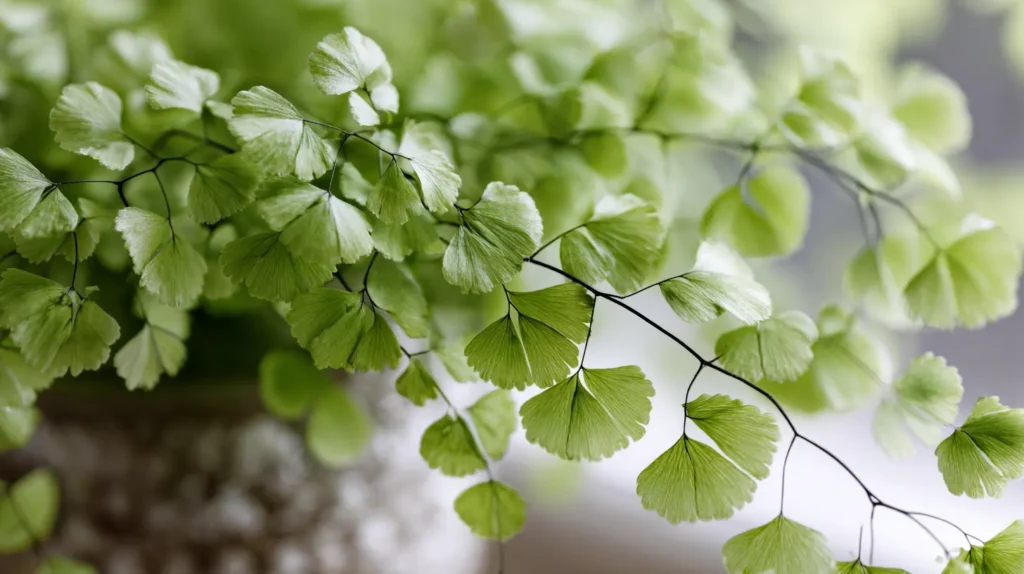
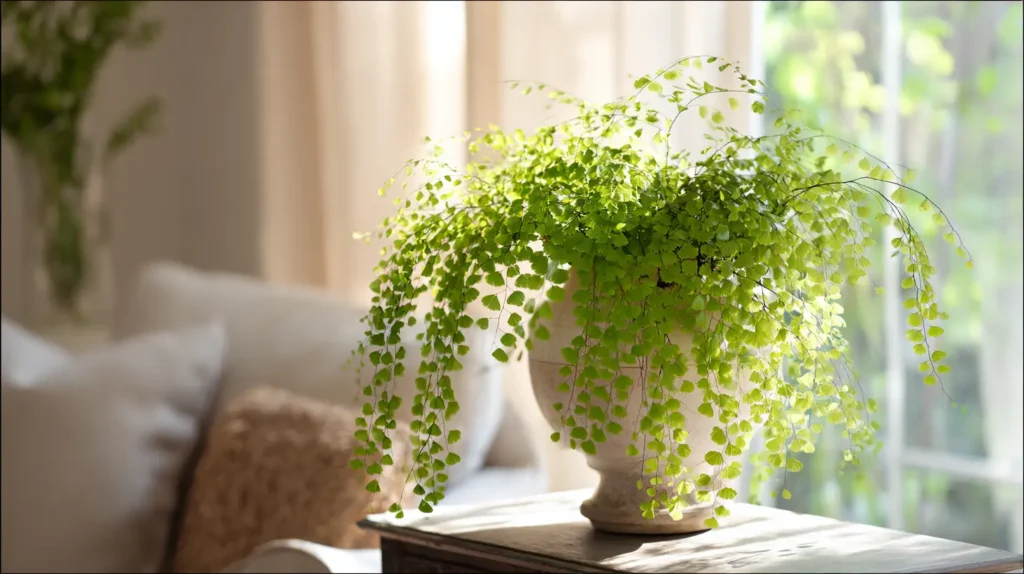
For a touch of pure, ethereal beauty, the Maidenhair Fern is a breathtaking choice. It’s fine, black stems hold clusters of small, fan-shaped leaves, creating a soft, lacy texture that feels incredibly delicate and graceful. It’s the ballerina of the plant world, exuding a gentle, airy elegance that can soften any space. The way its light-green fronds seem to float in the air is simply magical.
The Maidenhair Fern is perfect for bringing a touch of refined, natural beauty to a more traditional or classic living room. It looks stunning in a simple ceramic pot, a vintage urn, or even a small terrarium where its humidity needs can be met. Placed on a side table or mantelpiece, its delicate form provides a beautiful contrast to more solid objects, adding a layer of intricate, living detail.
- This is a diva plant that demands high humidity. It’s an excellent choice for a terrarium or a spot near a humidifier.
- Never let its soil dry out. It needs to be kept consistently moist.
- Provide it with bright, but very gentle, indirect light. Direct sun will scorch its delicate leaves in an instant.
- Don’t be discouraged if some fronds turn brown; simply snip them off, and new ones will grow as long as the conditions are right.
- Avoid placing it in drafty areas or near heating vents.
Pro Design Tip: Create a beautiful, spa-like vignette by placing a Maidenhair Fern on a small wooden stool next to a collection of beautiful candles and a piece of natural crystal. The combination of textures is incredibly serene.
Budget Consideration: Maidenhair Ferns are typically very inexpensive. The investment isn’t in money, but in attention. If you can provide the humid, moist environment it craves, you’ll be rewarded with unparalleled delicate beauty.
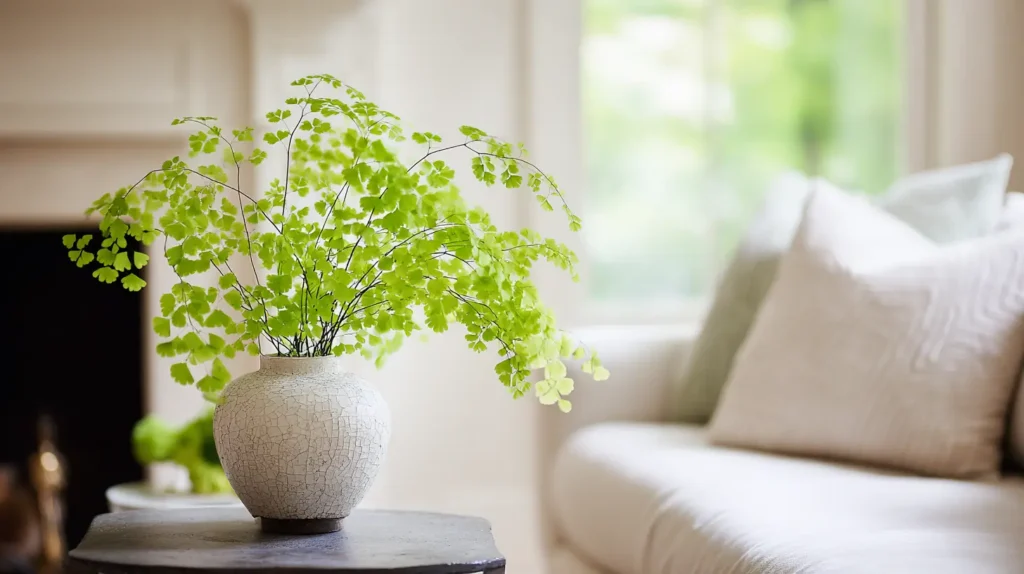
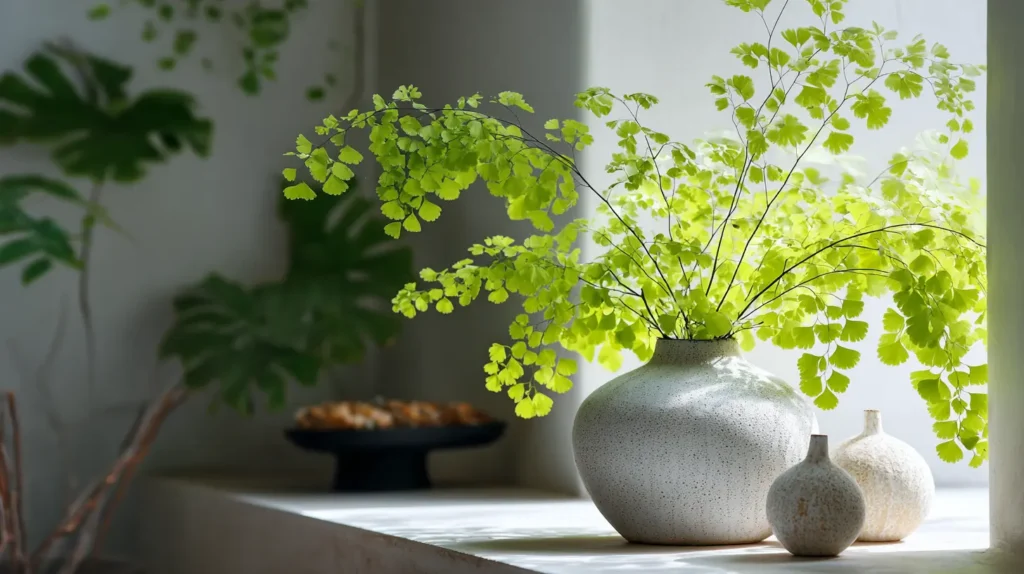
20. Simple and Seasonal: Dramatic Branches in a Vase
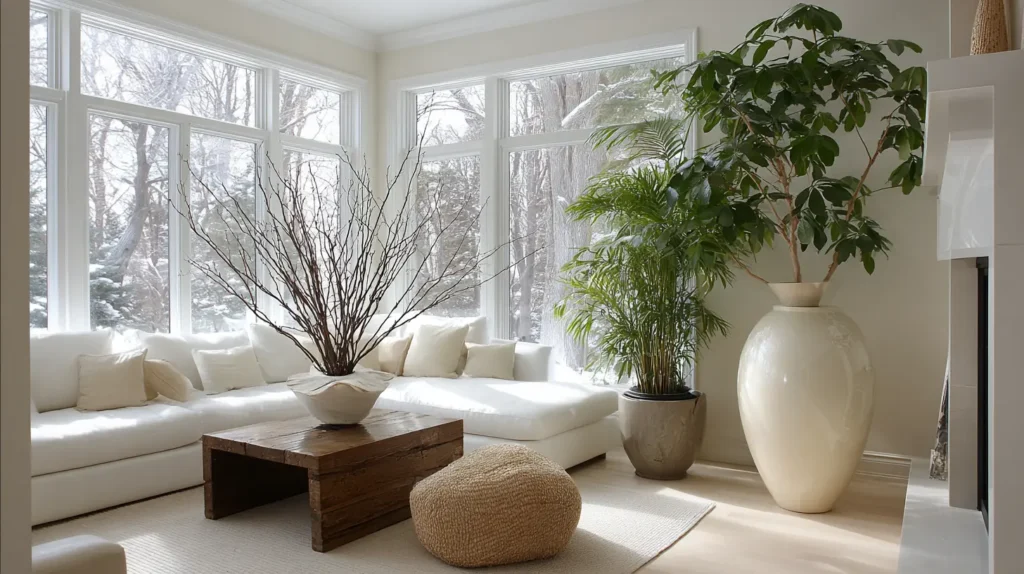
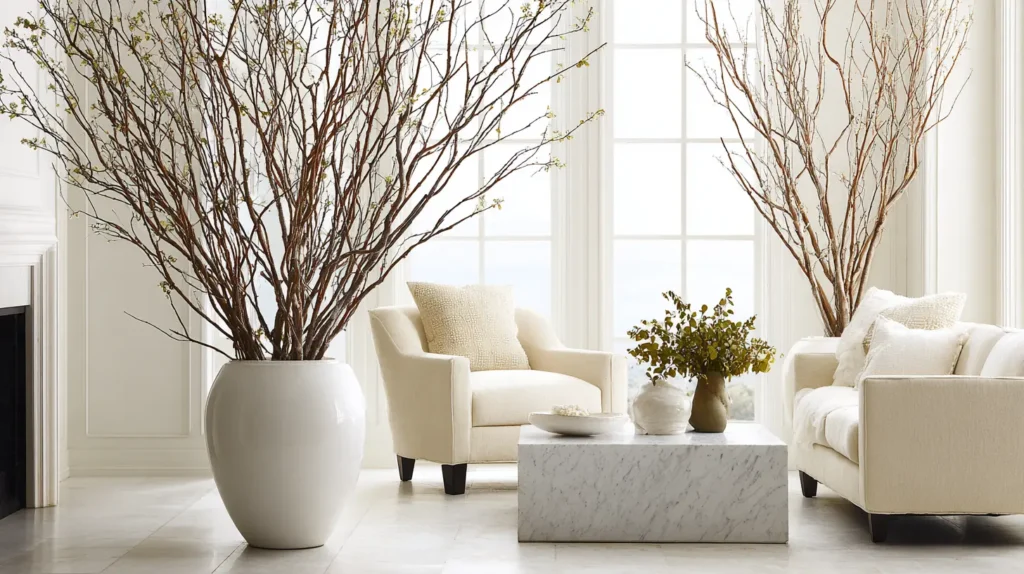
Embrace the beauty of impermanence and the changing seasons by styling your living room with simple, dramatic branches. This minimalist approach offers incredible impact with very little effort. A collection of tall, sculptural branches placed in a large floor vase can have the same architectural presence as a mature tree but with a lighter, more artistic feel. It’s a wonderfully simple way to bring a touch of nature indoors.
This idea allows you to connect your indoor space with the world outside your window. In spring, use flowering branches like forsythia or cherry. In summer, opt for lush, leafy green branches. In autumn, the fiery colors of maple or oak branches are stunning. And in winter, the stark, beautiful silhouette of bare branches can be incredibly chic and sculptural. It’s a living arrangement that is always changing, always in season.
- Choose a vase that is heavy enough to anchor the branches and prevent tipping. A tall, ceramic floor vase is ideal.
- Trim the bottom of the branches and crush the ends slightly to help them absorb water.
- Remove any leaves or smaller twigs that will fall below the waterline in the vase.
- Change the water every few days to keep the branches fresh for as long as possible.
- Play with scale. Don’t be afraid to use very tall branches for a truly dramatic effect.
Pro Design Tip: For an even more minimalist and long-lasting display, use dried or preserved branches, such as curly willow or eucalyptus. They require no water and will provide sculptural interest for months or even years.
Budget Consideration: This is potentially the most budget-friendly idea of all. You can often find beautiful fallen branches in your own backyard or a local park, allowing you to create a stunning, large-scale arrangement for free.
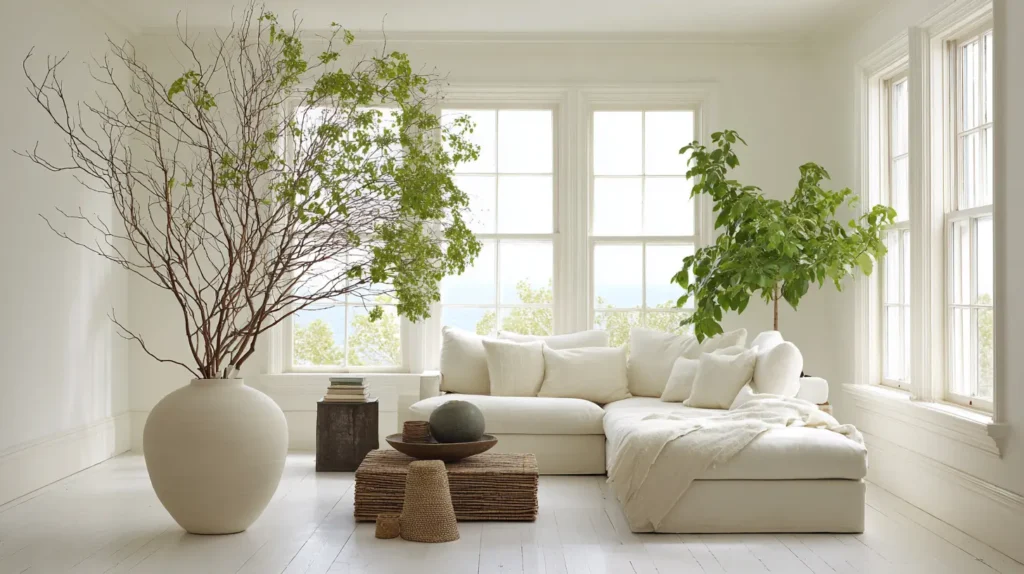
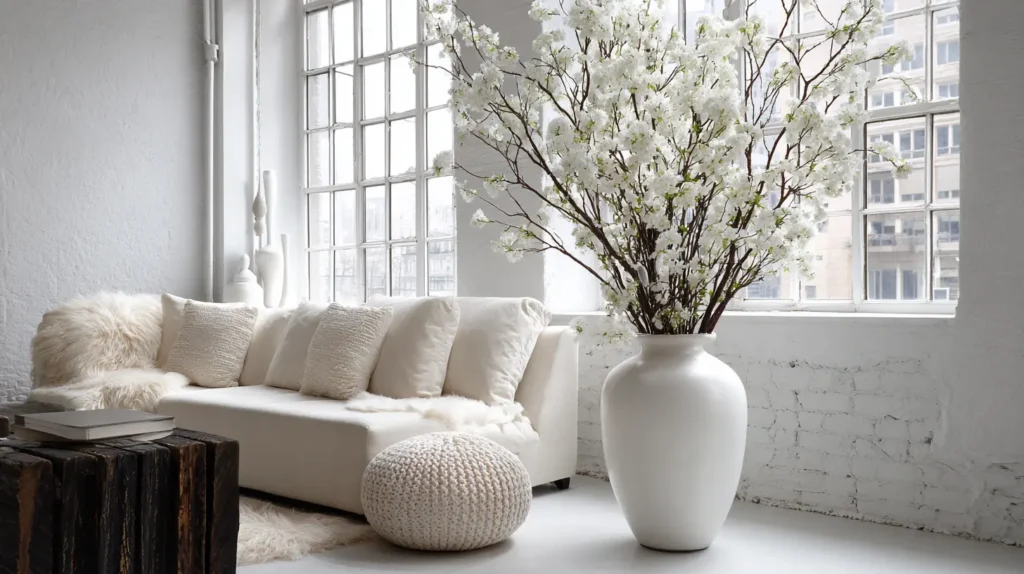
Conclusion
Bringing plants into your living room is a game-changer, blending style, wellness, and nature. From the lush greenery focal nook to whimsical air plant displays, these 20 ideas offer endless ways to personalize your space, whether you’re a minimalist or a boho enthusiast. Mix and match these concepts, experiment with textures, and let your creativity flourish. Which plant idea will you try first? Pin your favorite to your decor board and share your thoughts below!
FAQs
- What are the best low-maintenance plants for a living room? Snake plants, ZZ plants, and pothos are ideal for busy homeowners, thriving in low light with minimal watering.
- How do I choose a plant for a small living room? Opt for compact plants like succulents or vertical solutions like wall gardens to save space.
- Can plants improve my living room’s air quality? Yes, plants like peace lilies and snake plants filter toxins, enhancing indoor air quality.
- How often should I water living room plants? Depends on the plant—succulents need watering every 2-3 weeks, while ferns prefer weekly moisture.
- Where can I find affordable plant decor? Check Home Depot, IKEA, or thrift stores for budget-friendly plants and pots.

